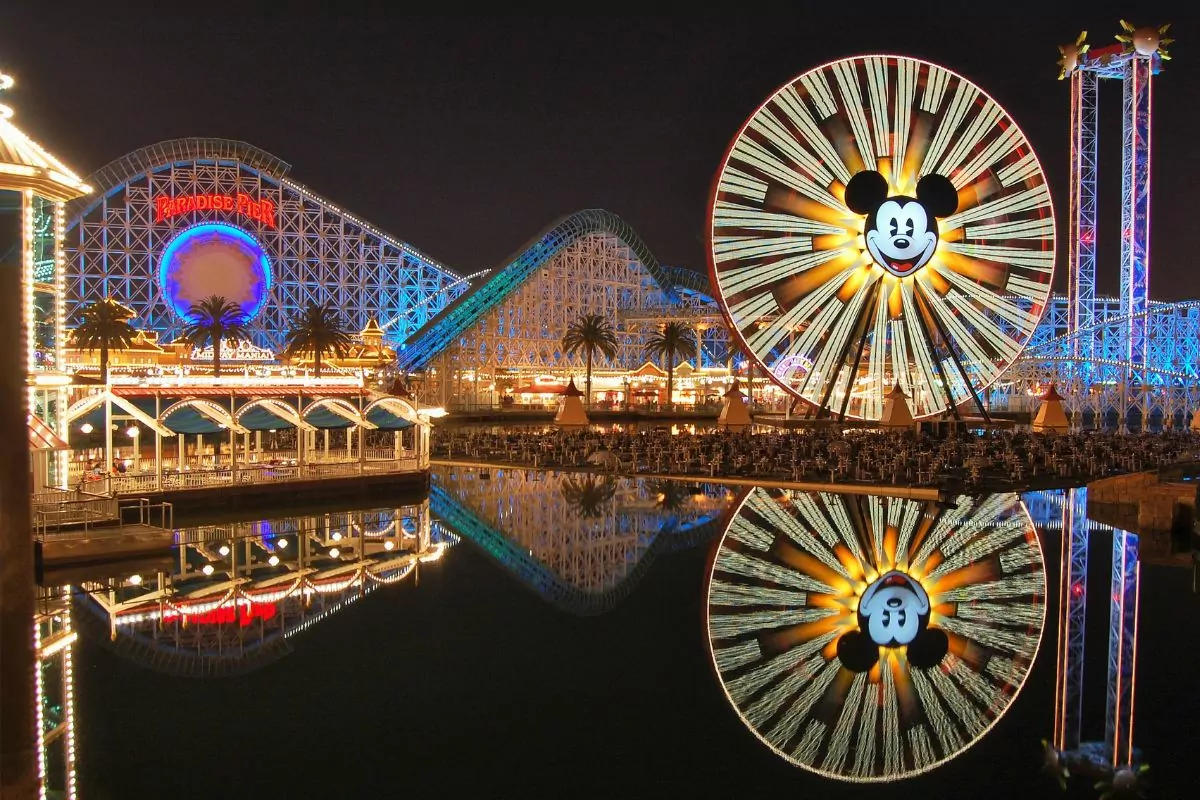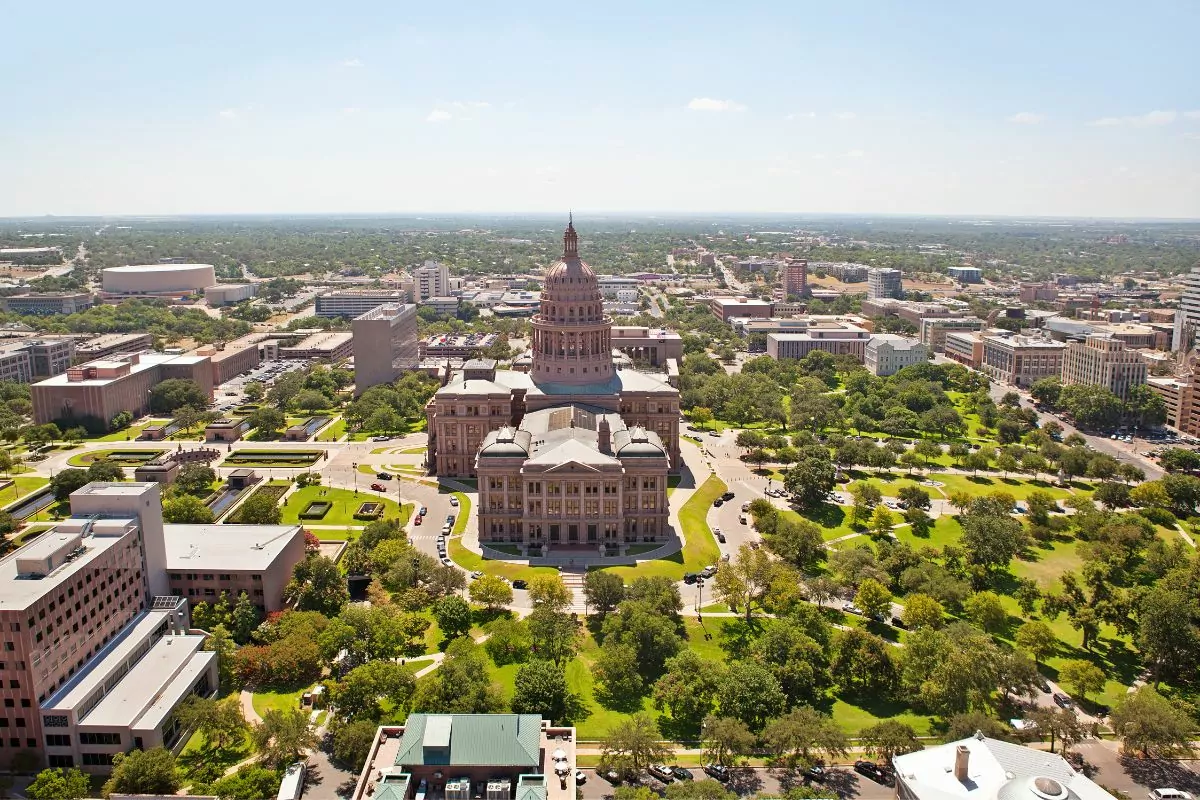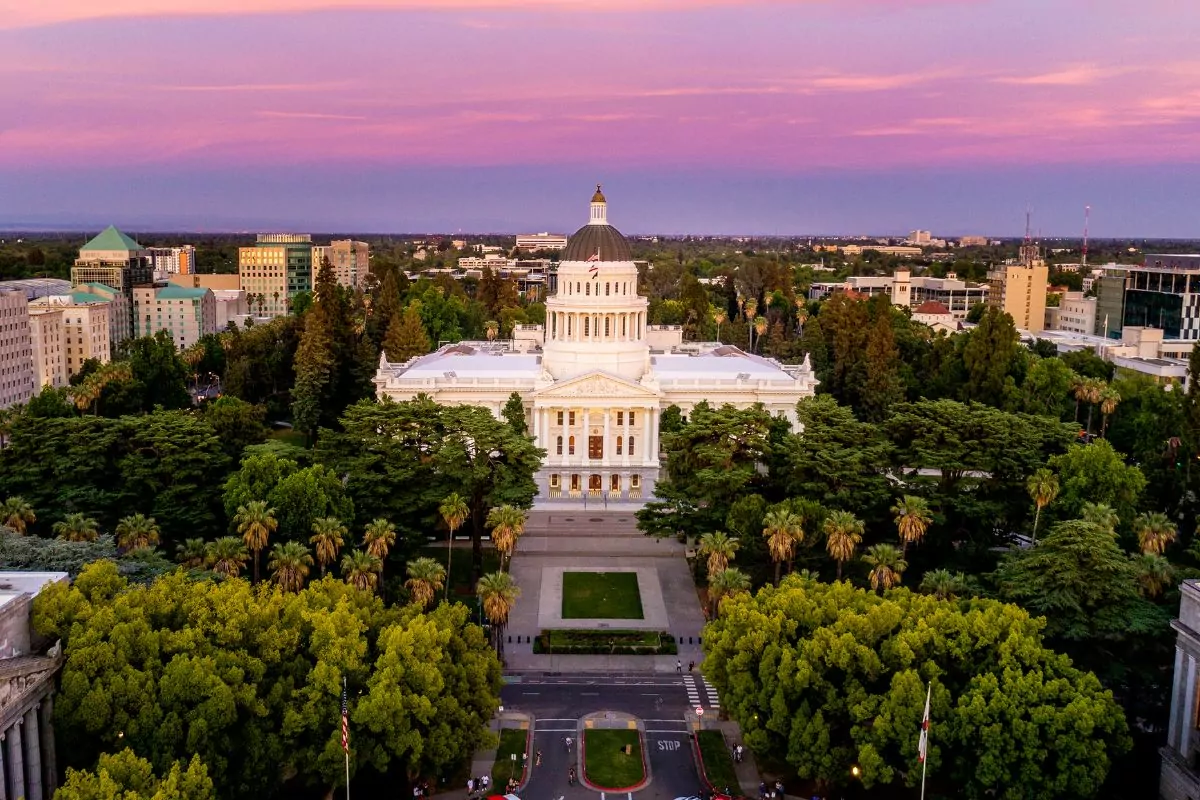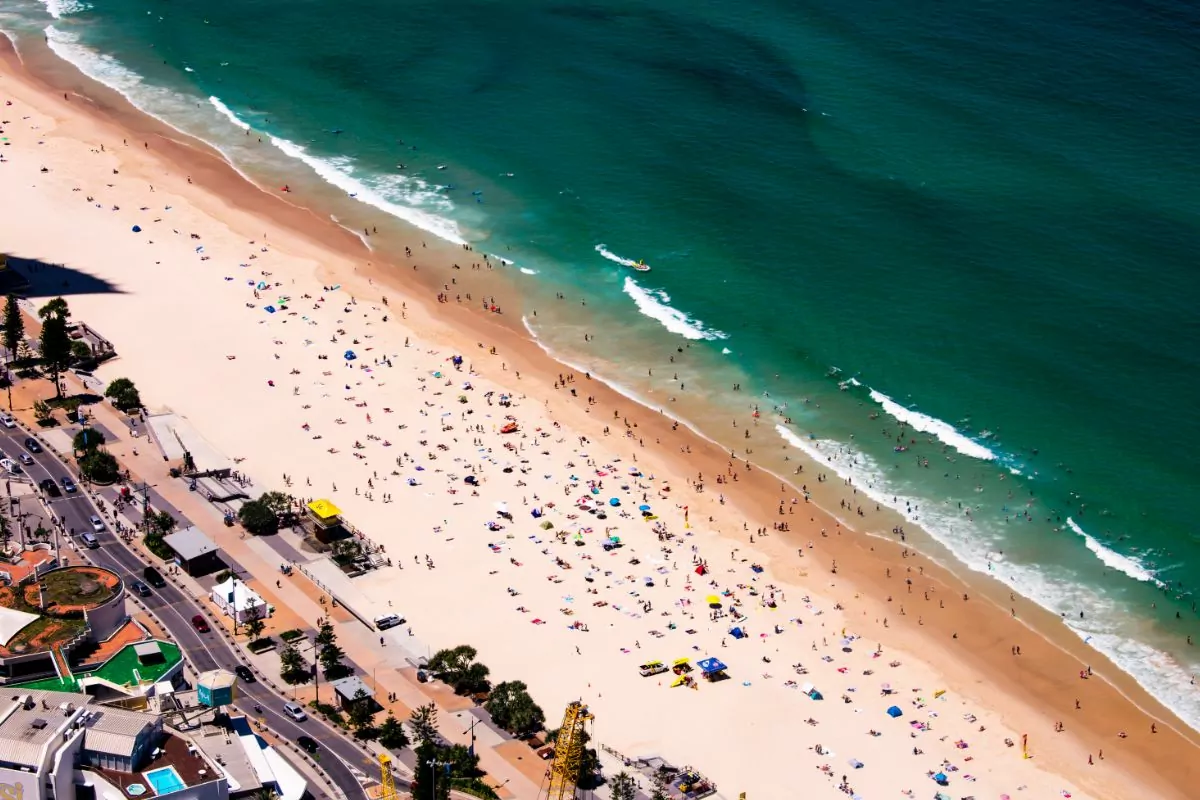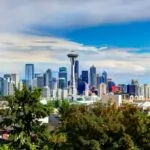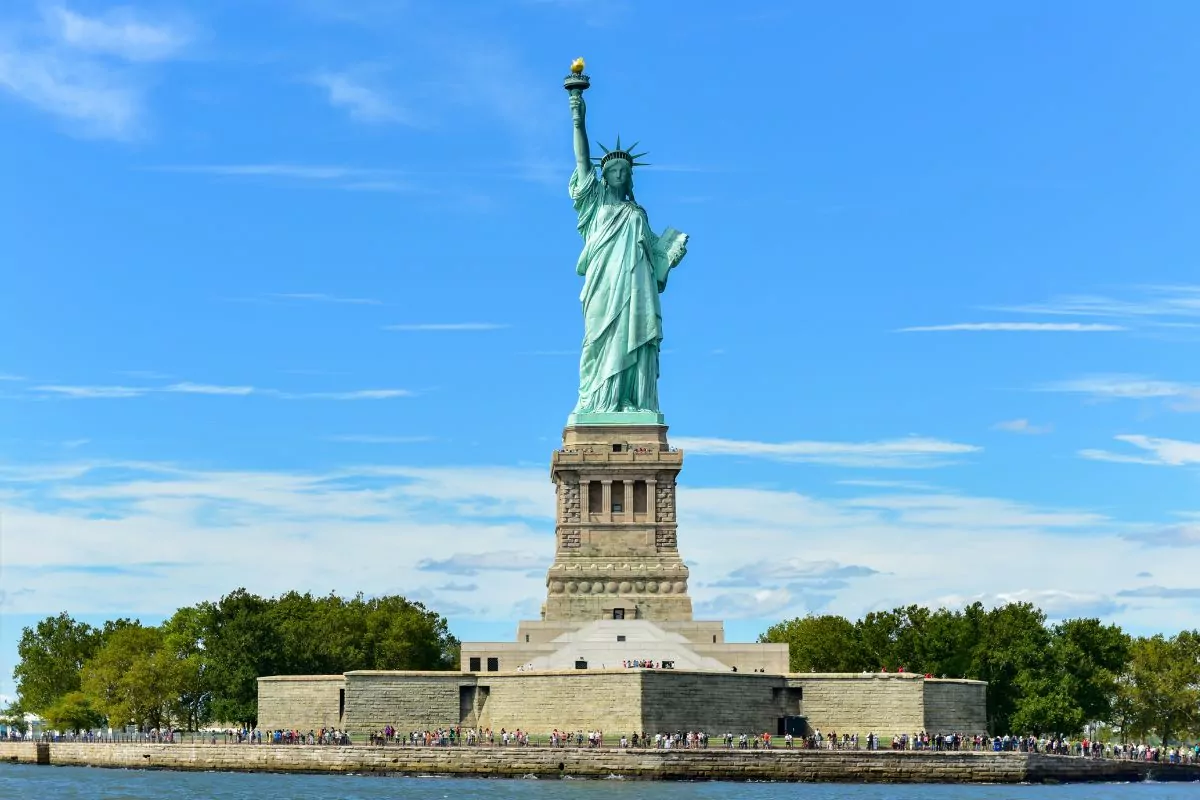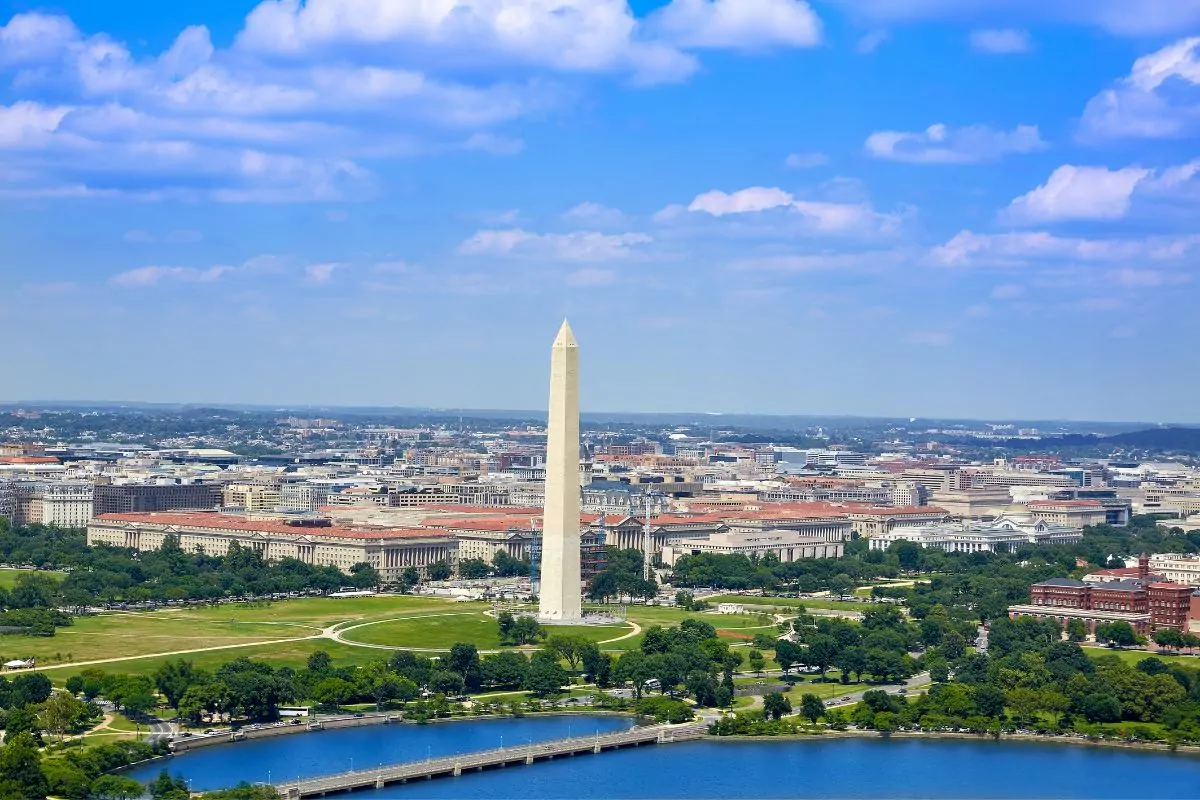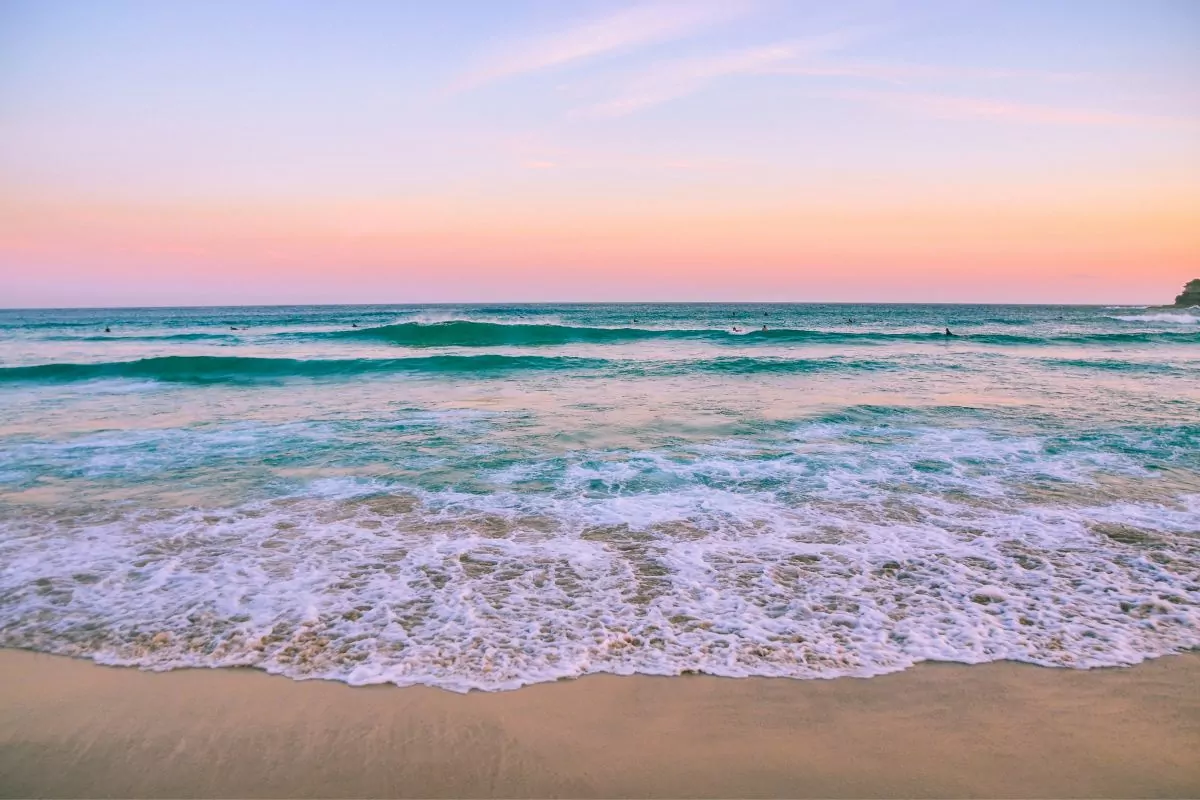The fact that California has family-friendly theme parks that can keep you entertained for days on end is just one of the reasons why it is one of the most sought-after travel destinations in the country.
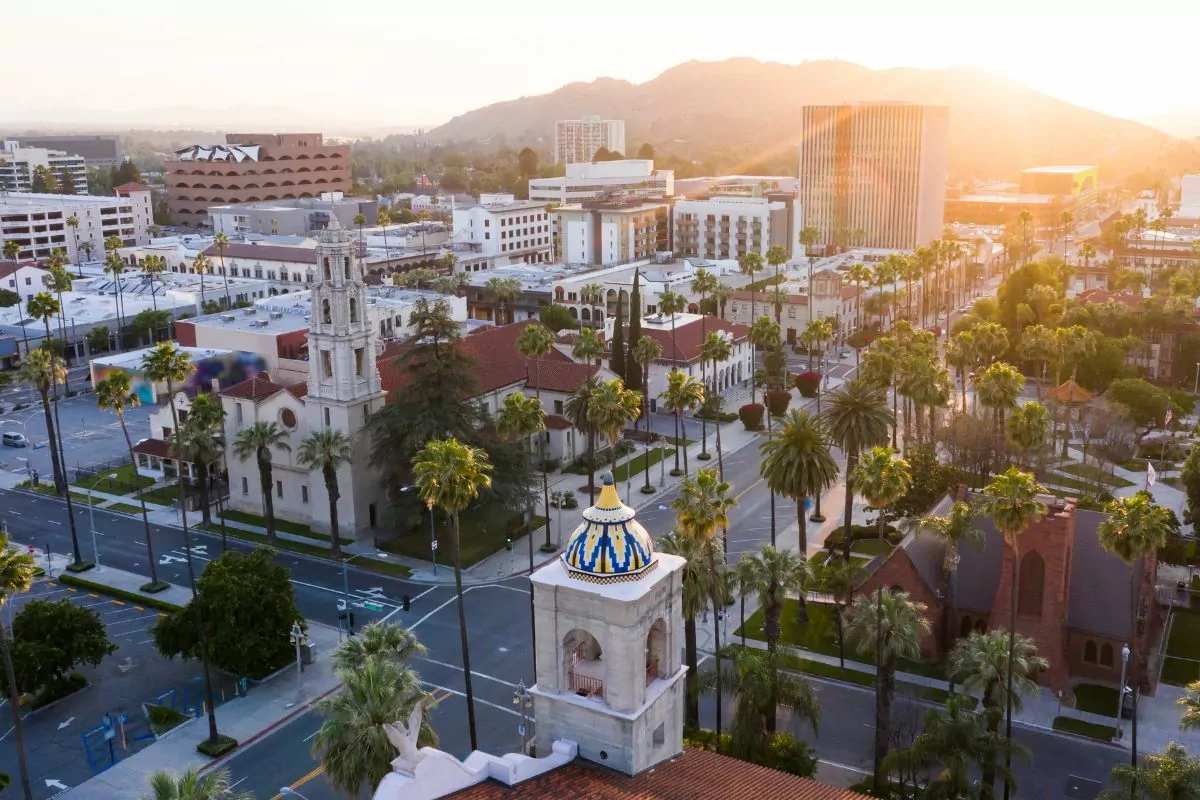
But California also features stunning coasts, national parks, waterfronts, and even deserts that can’t be missed.
There are many wonderful cities in California, including Los Angeles, San Francisco, Sacramento, San Diego, and many more.
Going to destinations like Lake Tahoe, Disneyland, Big Sur, and Yosemite National Park is among the best things to do in California. Aside from the potential to spot a star in Hollywood, there are other iconic pieces of architecture that are worth seeing.
California has something for everyone, whether you’re looking for nature, mainstream entertainment, or cultural and educational activities.
To help you find out where to go when you visit California, here are the top 30 attractions to see when visiting the Golden State.
1. Venice Beach
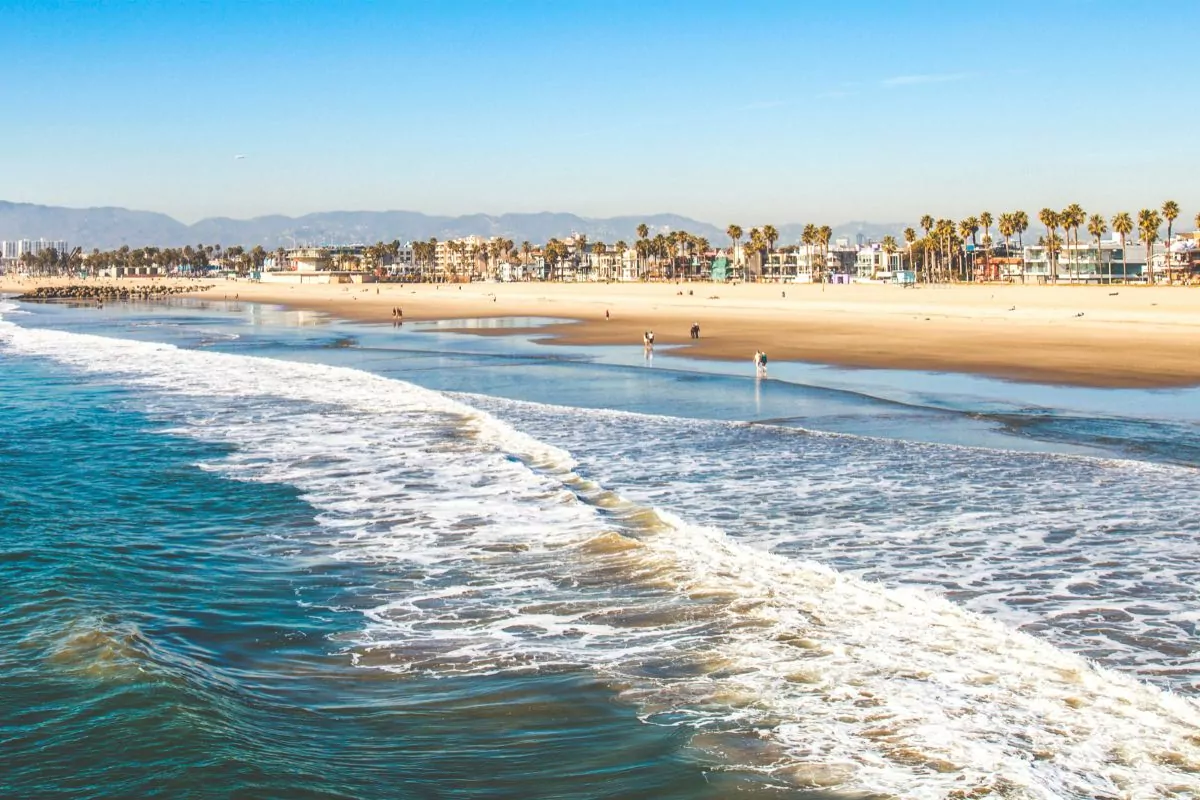
Venice Beach was created as a Los Angeles beach resort that pays homage to its Italian namesake with canals, piazzas, pedestrian bridges, a lagoon, and a colonnaded business center, bordering Santa Monica’s south side on the Pacific Coast Highway.
Today’s Venice, however, is better known for the eccentric events that take place on its famous beachside boardwalk and pier, where mimes, jugglers, musicians, and other types of street performers live in an ever-evolving and unique bohemian subculture.
On nearby outdoor courts, you might also catch some of the best pickup basketball matches in the country. Sit next to the daily drum circle on the beach or watch it all from the boisterous and energetic waterfront skate park.
You can also join one of Venice Beach Walking Tours’ strolls for an exploration of the city’s film heritage.
You’ll discover the significance of the area for the 1958 Orson Welles picture Touch of Evil and other locally produced films.
Rent beach cruiser bikes and ride the 22-mile Marvin Braude Coastal Bike Trail from Santa Monica to Torrance to really get moving.
2. Disneyland
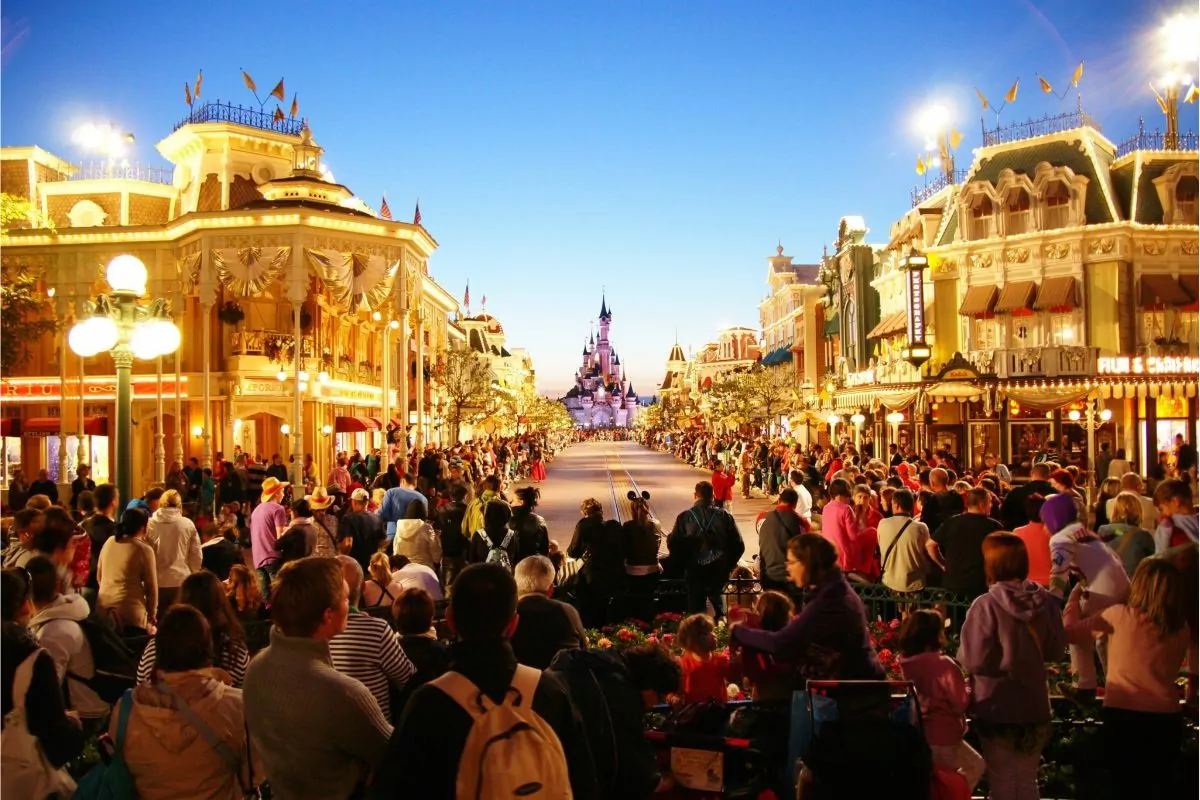
Since July 17, 1955, the Disneyland Resort has been a welcoming place where people’s dreams come true.
The Happiest Place on Earth encourages visitors to spend the day in the pinnacle of make-believe with first-rate attractions and captivating live performances.
There are several themed “lands” within the enormous Disneyland Resort, each with its own set of rides, shows, and attractions.
With its turquoise-tiled towers, golden turrets, and functional drawbridge, Sleeping Beauty Castle rises above Main Street to serve as the unmistakable focal point of the theme park.
Disneyland California Adventure Park, which is close to Disneyland Park, is the place to go for anything related to California, Pixar, and superheroes.
Discover the park’s eight themed zones, including Buena Vista Street, Pixar Pier, Paradise Gardens, Pacific Wharf, Grizzly Peak, Hollywood Land, and Avengers Campus.
Stay at one of the Disneyland Resort’s three magnificent hotels for the most magical experience possible.
Each offers a unique experience with all the features, creativity, and extras only Disney Parks can come up with, as well as exclusive advantages for visitors staying at a Disneyland Resort Hotel.
The Downtown Disney District, Disneyland Park, and Disney California Adventure Park are all conveniently close together, making this the ideal way to reach them all in a matter of minutes.
3. Golden Gate Bridge
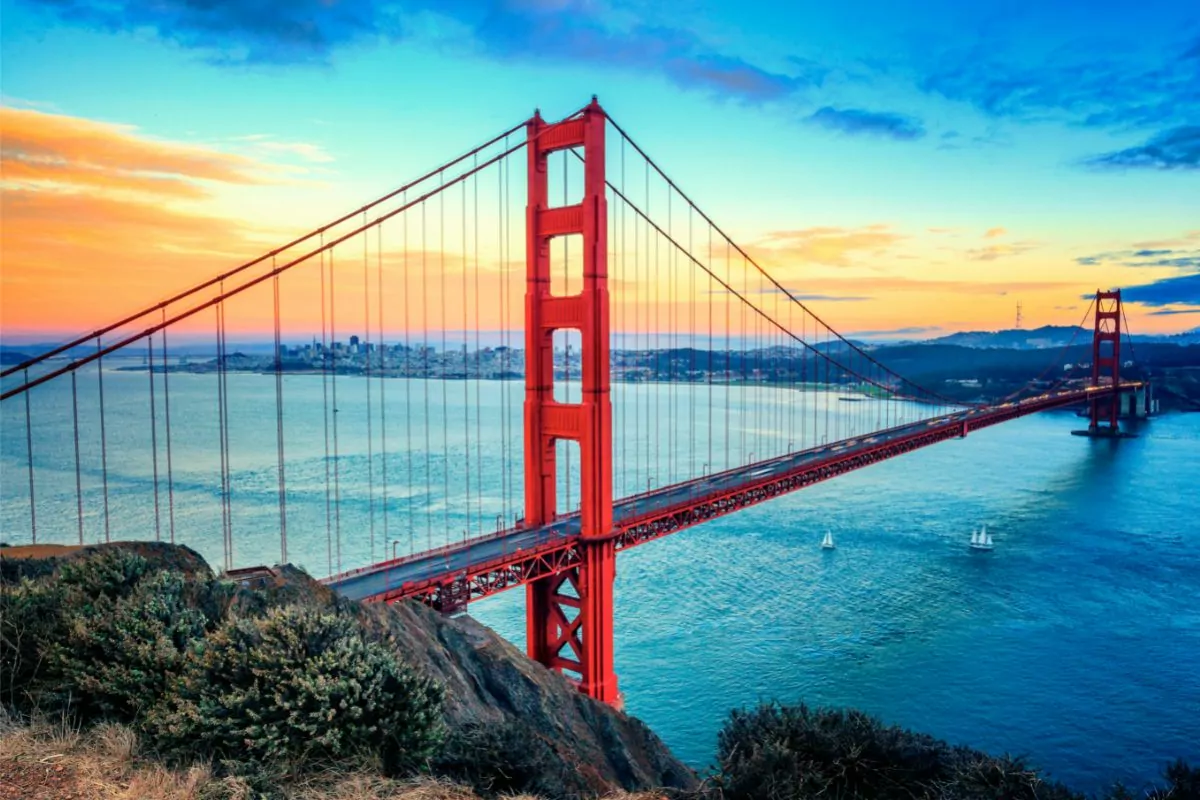
The renowned Golden Gate Bridge, easily recognized by its International Orange color, spans the strait of the Golden Gate from San Francisco’s Presidio to the Marin headlands.
The Golden Gate Bridge, formerly known as “the bridge that couldn’t be built,” is now recognized as one of the modern world’s seven wonders.
After a four-year battle against ferocious winds, dense fog, rock, and perilous tides, this spectacular span, possibly San Francisco’s most recognizable landmark, was opened in 1937. The 746-foot towers that support the 1.7-mile-long bridge were originally taller than any structure in San Francisco.
Two cables, each longer than 7,000 feet and carrying 80,000 miles of wire, span over the top of the towers and are anchored in concrete anchorages on the coast to support the suspended roadway.
The historic U.S. Route 101, which runs from Los Angeles north to San Francisco and beyond, was one of the busiest parts after the Golden Gate Bridge brought the populations of San Francisco and Marin counties closer together.
The biggest draw for runners competing in any of the numerous local annual foot races is that it is equally popular with hikers and cyclists.
4. The Hollywood Sign
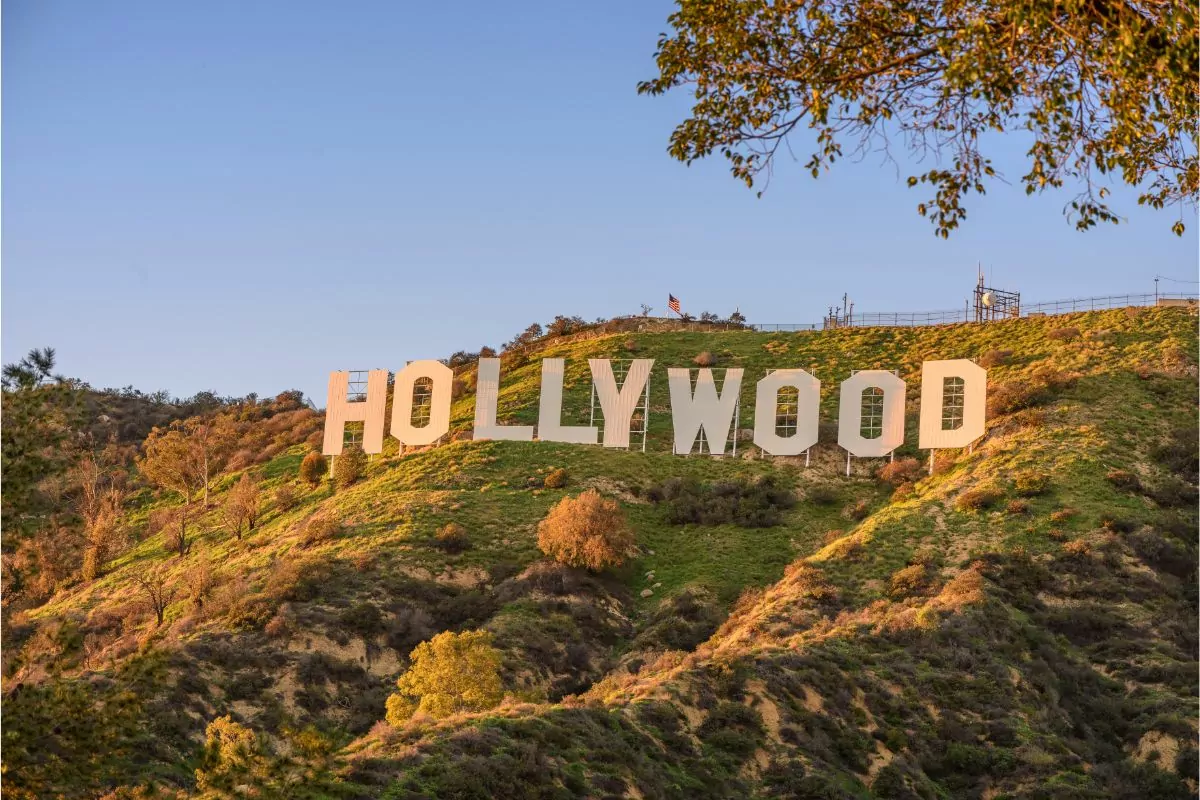
One of the most iconic man-made structures in the world, the Hollywood sign, towers over the metropolis of Los Angeles.
On top of Mount Lee in 1923, a real estate corporation spelled out “HOLLYWOODLAND” to draw attention to their business. Each letter was etched in a row of 8-watt light bulbs, and it was 50 feet high and almost 400 feet wide.
The city fell in love with the sign, which was only intended to be up for 18 months. The sign was made permanent in response to public demand.
There are numerous markers throughout the Griffith Park pathways that lead to the Hollywood Sign. The climb to the sign is remarkable because you get to hike above and behind it, so you can see the sign reversed with a stunning view of LA below.
The Hollywood Sign itself is risky, illegal, and virtually impossible to climb. However, you may visit the Griffith Observatory to have a better view and get a little closer to the sign without having to hike for two hours.
Drive up to the Beachwood Canyon area, park your car, and take some Instagram-worthy close-up pictures to get even closer.
5. Lake Tahoe

The world-class environment of North Lake Tahoe is magnificent in all four seasons, with towering granite mountains, steep terrain, and heavy snowpacks, as well as crystal blue waters and sandy shorelines.
It is made up of 12 distinctive communities that encircle Lake Tahoe, one of the purest lakes in the world and the largest alpine lake in North America, and the Sierra Nevada mountains serve as the backdrop.
With accommodations that are perfect for any length of time or budget, North Lake Tahoe covers two states, California and Nevada, and provides a wide range of activities, from adventurous to relaxing to romantic.
North Lake Tahoe is a year-round vacation spot that encourages exercise in a breathtaking natural environment.
There are 39 trillion gallons of water to enjoy, along with hundreds of miles of hiking and biking paths, dozens of beaches, world-class downhill and Nordic skiing, and a variety of winter sports.
Each season, many well-known Lake Tahoe events, such as music festivals, concerts, and sporting competitions, take place.
6. San Diego Zoo
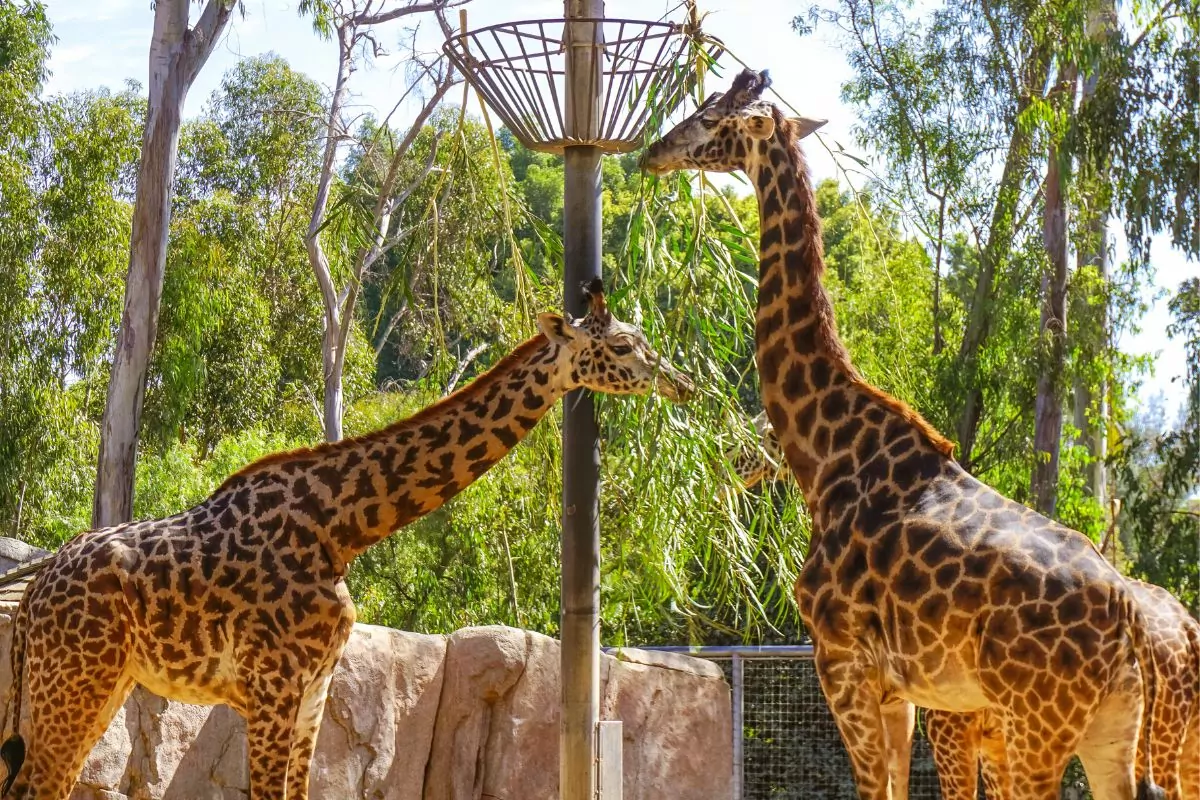
Many exotic animals were left unattended in their exhibitions after the Panama-California exposition in 1915. The San Diego Zoo was established in 1921 to serve as these animals’ permanent residence.
The renowned zoo has evolved into a non-profit wildlife sanctuary where more than 3,500 rare and endangered animals from more than 650 species and subspecies can be found.
It also houses a significant botanical collection with more than 700,000 unique plants.
It is situated in Balboa Park, a destination in itself with museums, botanical gardens, restaurants, paths, and open space, just north of downtown San Diego. Animal and nature enthusiasts will truly find bliss here.
Visitors to the San Diego Zoo can enjoy an incredible overview of the entire park from the aerial tram known as Skyfari. This 1.5-mile-long form of transportation was constructed in 1969 and the highest point is 185 feet above the ground.
The zoo also provides a two-hour educational tour called the Inside Look Tour, which offers unique access to behind-the-scenes views and fascinating details about how they care for these animals. You won’t find such an experience anywhere else.
7. Universal Studios Hollywood
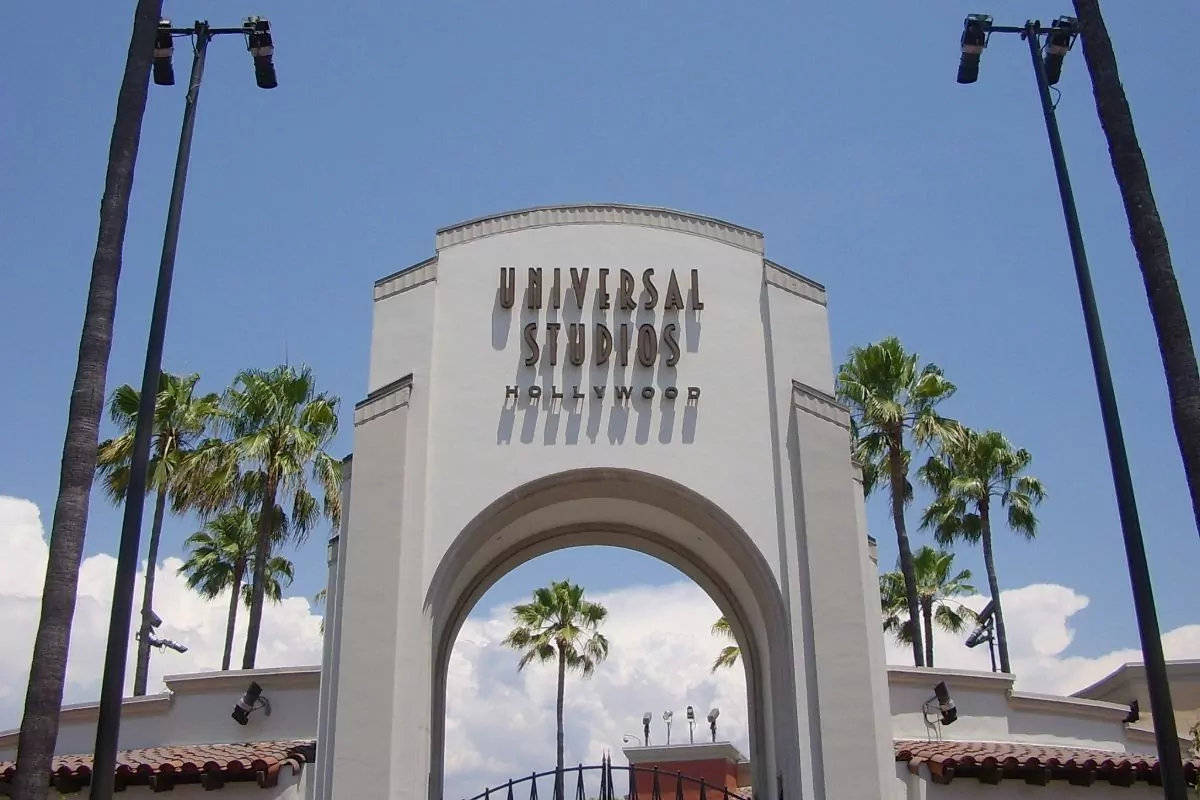
A family theme park and movie studio, Universal Studios Hollywood is located in the San Fernando Valley near Los Angeles. As the first Universal Studios theme park in the world, it debuted in 1964.
A range of rides and attractions are offered at the 415-acre park, which caters to both thrill-seekers and families with young children.
Since its opening, Universal Studios Hollywood has divided its park into two floors to accommodate guests with a variety of interests; the Upper Lot and Lower Lot.
The Starway, a collection of escalators, provides free access to all parts of the park. The theme park’s major themed area, The Wizarding World of Harry Potter, is located on the Upper Lot among other family-friendly activities.
For the more exhilarating rides, you should explore the Lower Lot.
A tram ride through the park will take you on 45- to 60-minute studio tours at Universal Studios Hollywood. This leads you to some of the studio’s private backstage filming locations.
After spending hours on thrilling rides, engaging character encounters, and exclusive behind-the-scenes tours, be sure to stop by one of the park’s themed eateries if you’re feeling hungry.
Famous restaurants such as The Three Broomsticks will be happy to provide you with meals inspired by the Harry Potter franchise, while Simpsons fans will want to visit the Duff Brewery Beer Garden for some food and beverages.
Not to mention the incredible selection of sweet treats and snacks that can be found all over the park!
8.Alcatraz Island
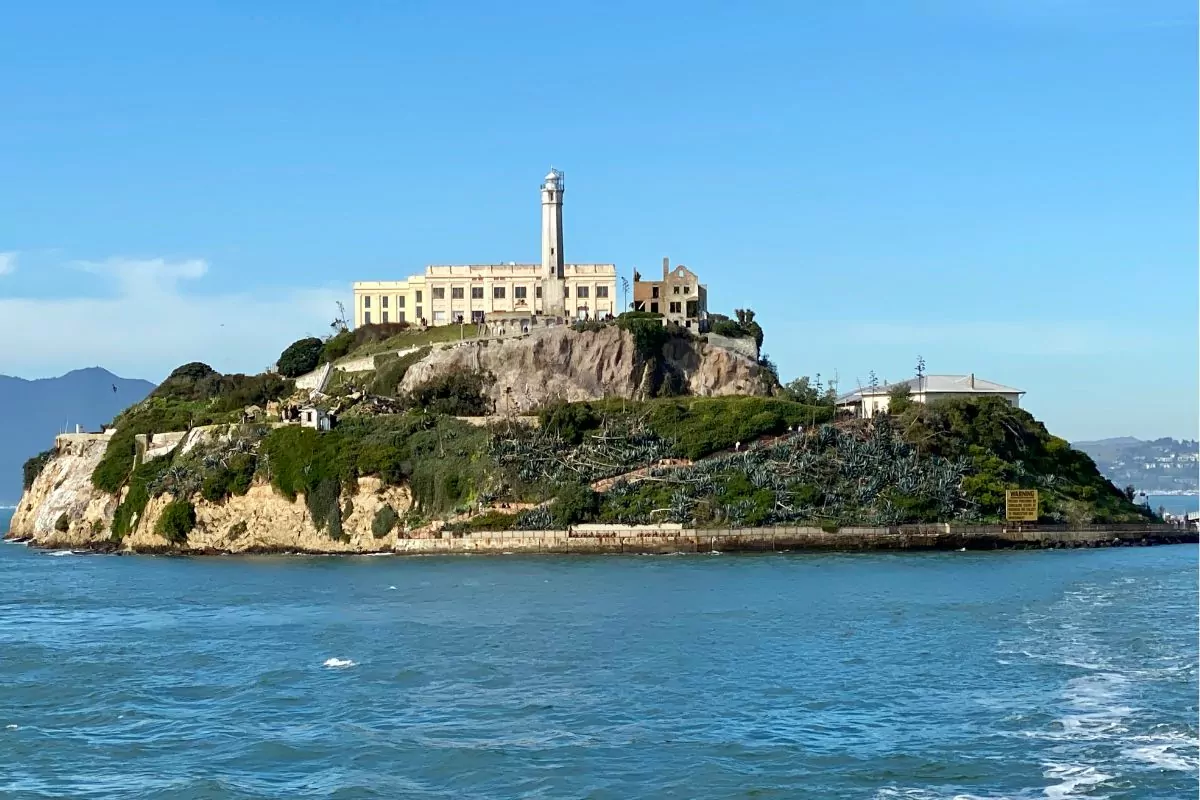
Alcatraz Island occupies a total of 22 acres in the middle of San Francisco Bay and is situated 1.5 miles off the coast of San Francisco. Alcatraz, one of America’s most visited national park locations, opened to the public in the fall of 1973 and now receives more than 1.4 million people annually.
Alcatraz Island is well-known as the former notorious jail where some of the worst criminals in US history were incarcerated, and it is a popular attraction in the San Francisco Bay area.
Due to the island’s desolate and precipitous look, the facility is officially known as Alcatraz Federal Penitentiary, but it is more commonly referred to as “The Rock.”
Up until its closure in 1963, Alcatraz had the notoriety of being “America’s toughest prison.” The prison island is now a public museum and a must-see attraction when visiting California.
The 20-minute boat ride from Pier 33 Alcatraz Landing will take you to the small, rocky island off the coast of North Beach.
9. Hollywood Walk Of Fame
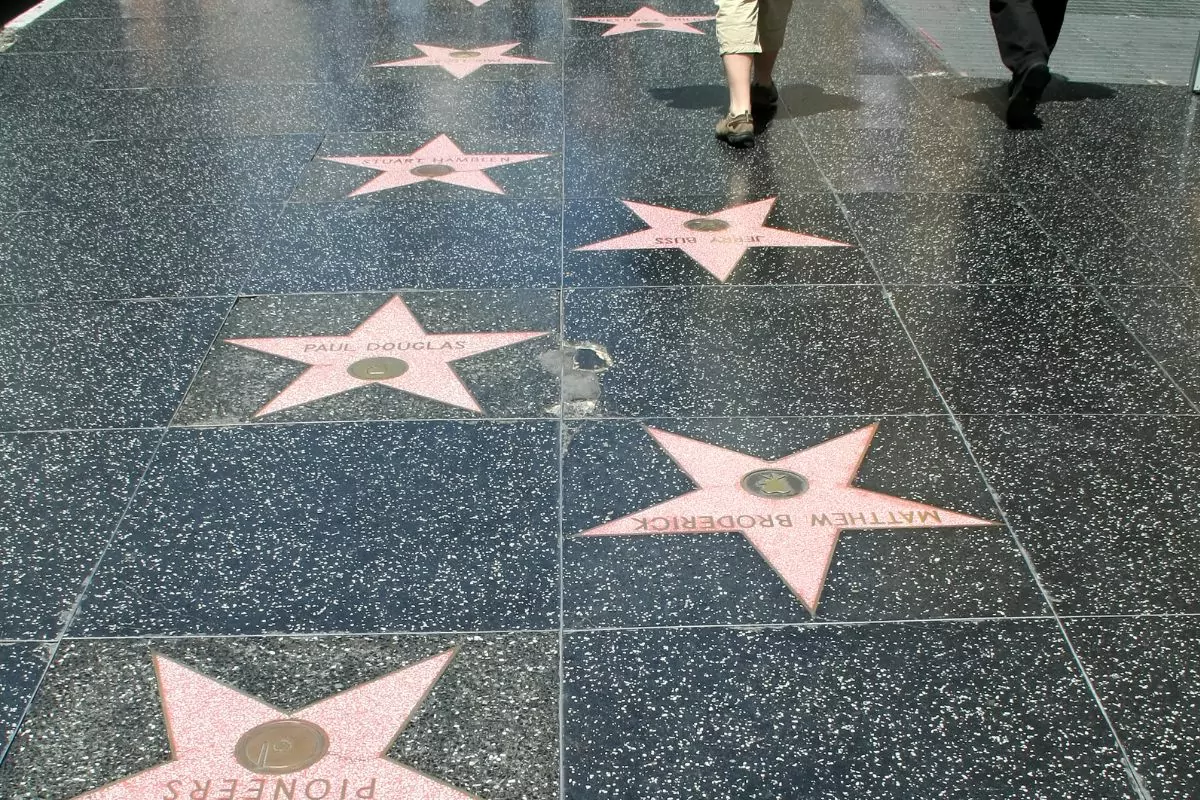
More than 2,500 terrazzo and brass stars are placed on the sidewalk along 15 blocks of Hollywood Boulevard and three blocks of Vine Street to create the famed Hollywood Walk of Fame.
The five-pointed stars celebrate the successes of entertainers like actors, musicians, directors, and producers.
Every year, about 10 million people traverse the promenade to see the names of the biggest superstars in the world.
The Hollywood Chamber of Commerce adds about 20 additional stars each year, bringing the total number of stars honoring the awardees to about 2,690.
Every time new stars are introduced to the Walk of Fame, large crowds gather in the public viewing area to congratulate the newest member.
At star ceremonies, it’s not unusual to see tens of thousands of adoring fans applauding their favorite celebrities. Getting their photo taken with their favorite celebrity star is often the exciting highlight of a trip to Hollywood for many tourists.
10. Chinatown, Los Angeles
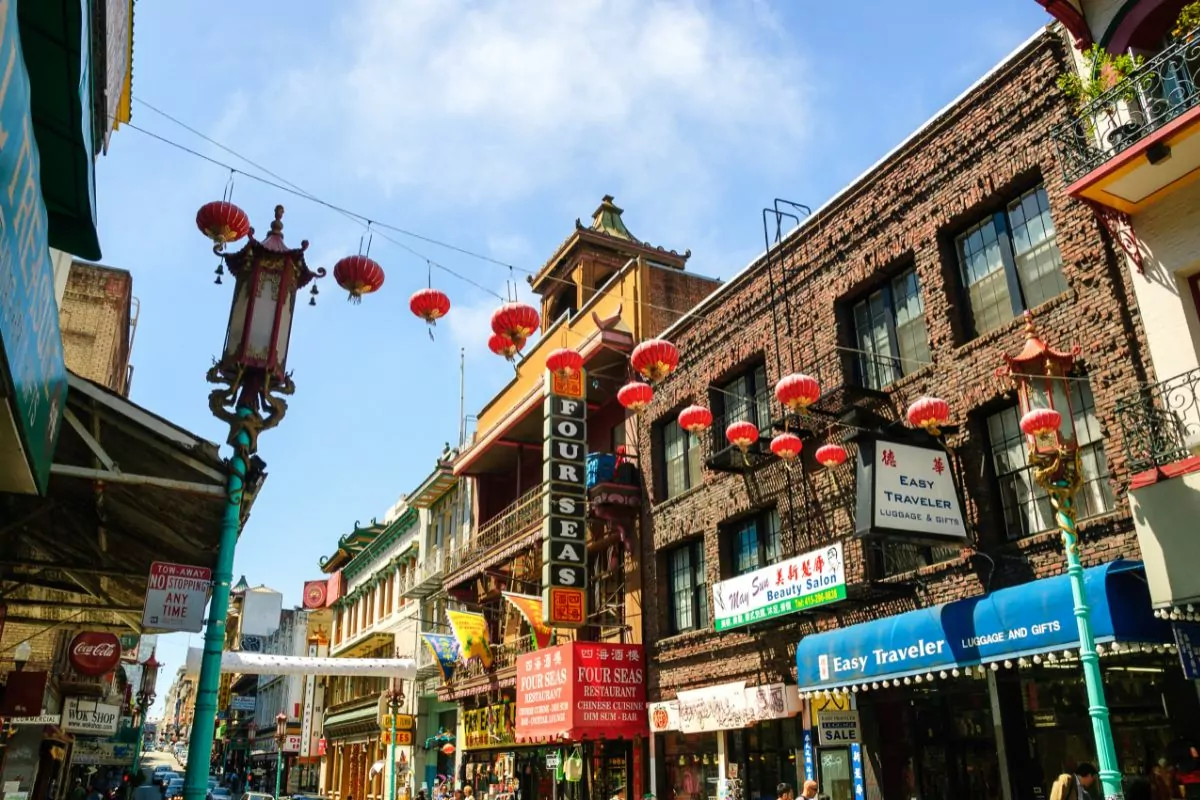
LA’s Chinatown is well-known and important to the history and multiethnic culture of California. In the middle of the 19th century, Chinese immigrants who were required for mining and railroad work established themselves in this lively area.
The Chinese have developed solid neighborhoods that welcome both inhabitants and visitors and that proudly express their ethnic origin, traditions, and shared identity.
Many legendary movies have been made in Los Angeles’ Chinatown, where notable Chinese Americans have also lived and developed a variety of street foods.
The Thien Hau Temple, one of the most popular locations for prayer and tourism, is located in the historic district and is devoted to Mazu, the goddess of the sea.
Additionally, this is where the Chinese American Museum is located, which is symbolically housed in the oldest and final remaining building from the original Chinatown of Los Angeles.
This famous Chinatown in Southern California is surrounded by eateries, shops, art galleries, and structures in the pagoda style that has served as the backdrop for many motion pictures.
11. Death Valley
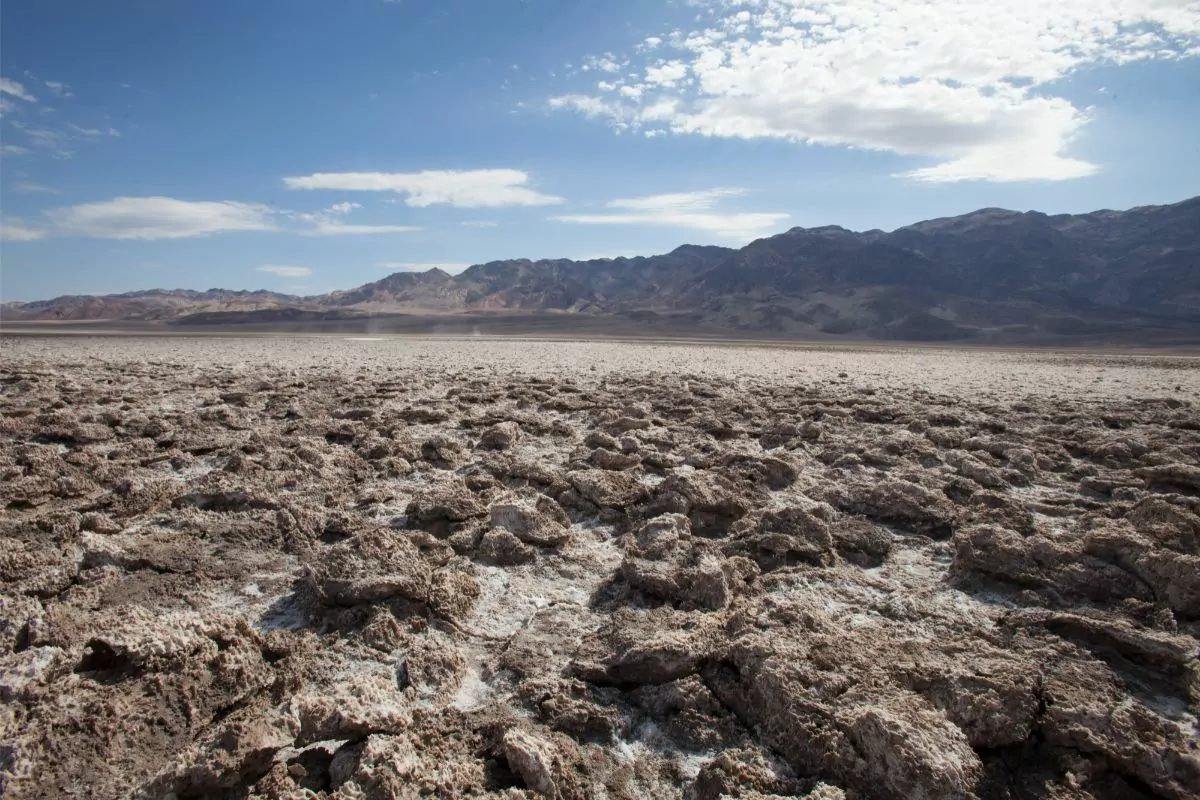
A lifetime of surprising discoveries is guaranteed by a trip to Death Valley National Park.
This extraordinary and fabled terrain is characterized by miles and miles of enormous sand dunes, technicolor cliffs and canyons, uncommon and endemic animals, unique evaporative elements, and jaw-dropping peaks soaring 11,000 feet above nearby valleys. It is alive with incomparable beauty.
The intriguing desert valley is located in the northern Mojave Desert, near the Great Basin Desert’s eastern boundary, in south-central California.
Death Valley National Park is the largest national park in the Lower 48, with a total area of 5,270 square miles that extends into Nevada.
There are countless ways to experience one of the hottest and driest places on earth, from leisurely strolls to challenging climbs, from camping to even playing golf on the lowest-elevation courses on Earth.
The vibrant Zabriskie Point overlook, Mesquite Flat Sand Dunes, Golden Canyon, and Badwater Basin are all essential during your visit.
The stunning Ubehebe Crater, Mosaic Canyon, Salt Creek, and the imposing Telescope Peak are among other must-see locations.
And for the braver tourists, Hell’s Gate, Funeral Mountains, Starvation Canyon, Dead Man’s Pass, and Coffin Peak should be at the top of your bucket list.
Visitors to Death Valley National Park will also discover a slew of artifacts from the region’s long history, including metal ore mines, charcoal kilns, ghost towns, petroglyphs, and historic Shoshone foot trails.
These remnants provide a glimpse into the hard life of the region’s early settlers and native inhabitants.
12. Yosemite National Park
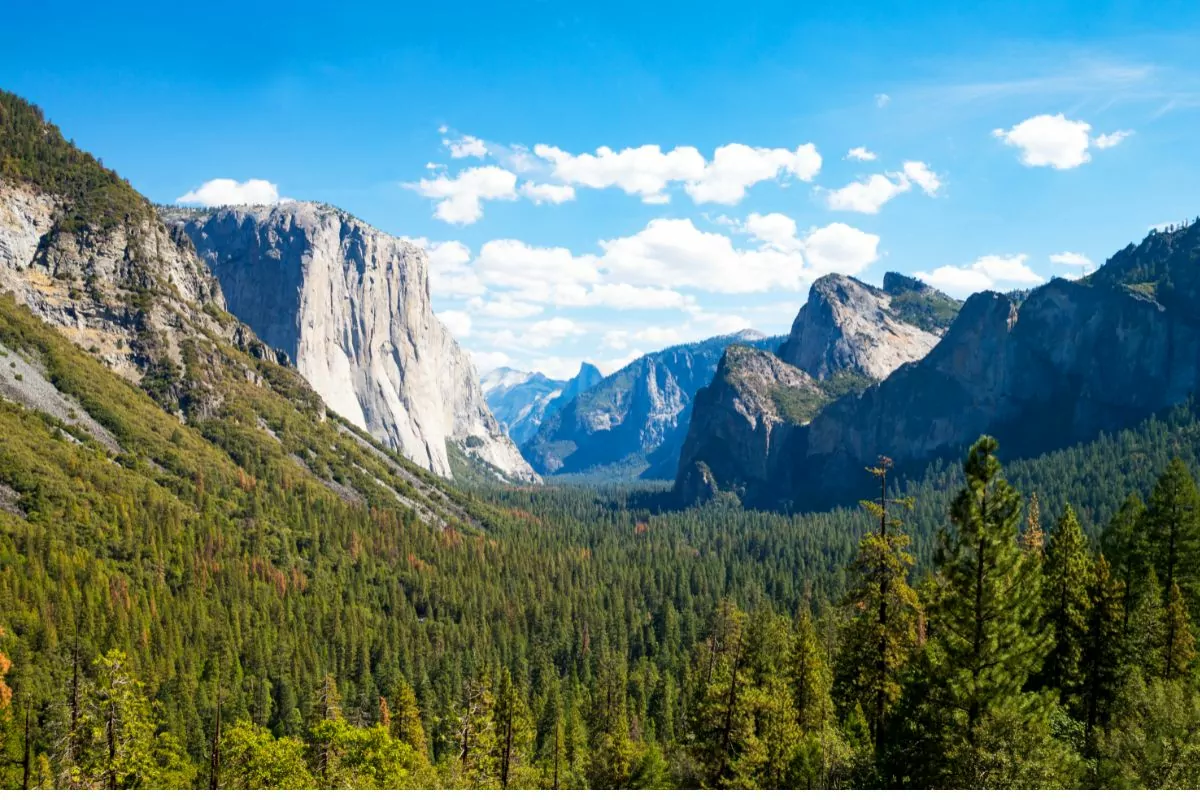
Yosemite, one of the most visited national parks in the country, has some of the best scenery, hiking routes, and vacation options in the country.
The national park, which is situated in central California and is sometimes referred to as “A Land of Giants,” was created in 1890 and receives 4 million visitors each year.
It is a place where history was made as America’s first recreational and entertainment-focused territory.
There is a belief that it set the standard for all future national parks in the United States, and there would be no national parks without Yosemite.
Yosemite National Park has a wide range of attractions and activities. The Valley is a 7-mile-wide canyon filled with amazing rock formations, including El Capitan, the tallest granite monolith in the world and one of the most popular places for rock climbing.
The largest waterfall in North America, Yosemite Falls, is also located within the park and offers extremely spectacular views. Giant Sequoia trees, which are thought to be over 3,000 years old, are another incredible feature of the park.
13.Fisherman’s Wharf
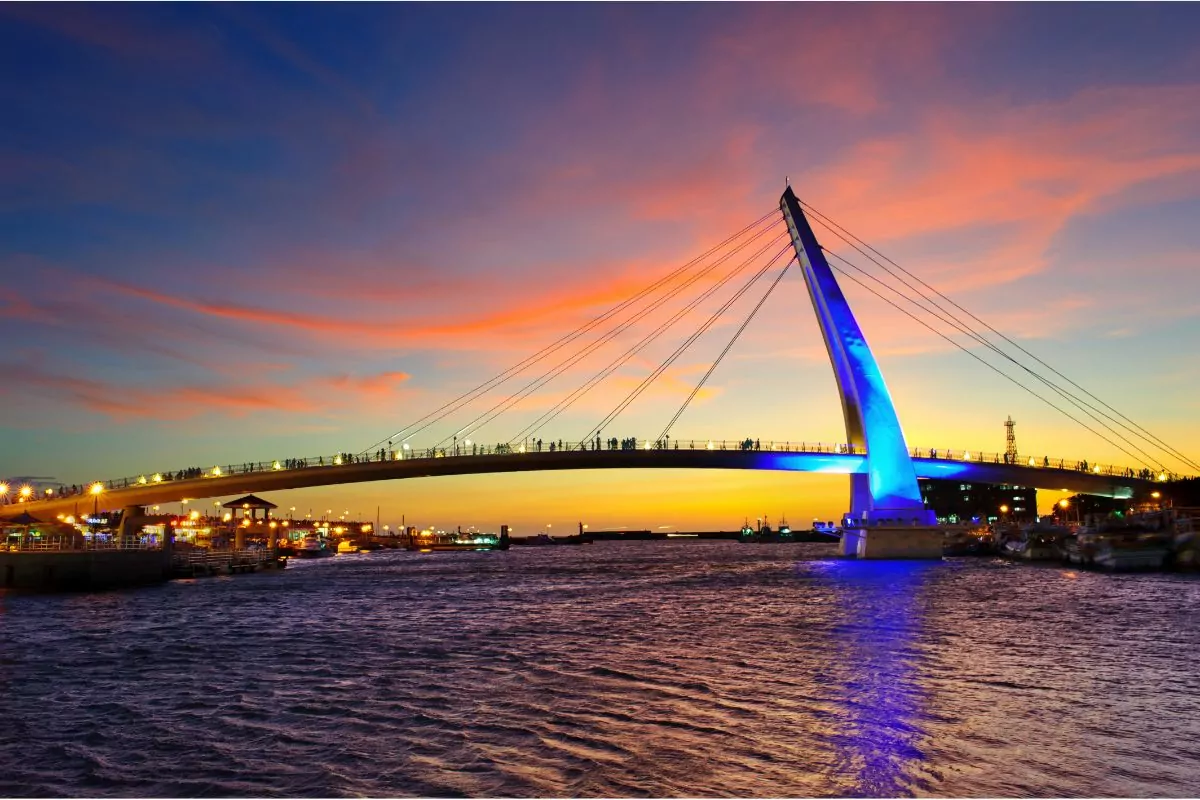
San Francisco’s Fisherman’s Wharf, a famous neighborhood featuring trams, museums, historical parks, shops, and fine restaurants, stretches along the city’s northern coastline.
There are a ton of interesting museums, independent boutique shops, historic sites, and some of the best seafood you’ll find in this region of the United States that visitors can easily spend their whole trip exploring and discovering new experiences.
One of the most well-known and popular tourist destinations in the western US, Fisherman’s Wharf has been featured in movies like the James Bond series.
Two museum ships on its iconic Pier 45 are guaranteed to excite history fans, and the area’s quirky stores will satisfy your quest to find the ideal present.
Families and couples on a romantic getaway will find much to do in Fisherman’s Wharf to keep them entertained, provide amazing seafood dining experiences, and create lifelong memories.
14. Getty Center
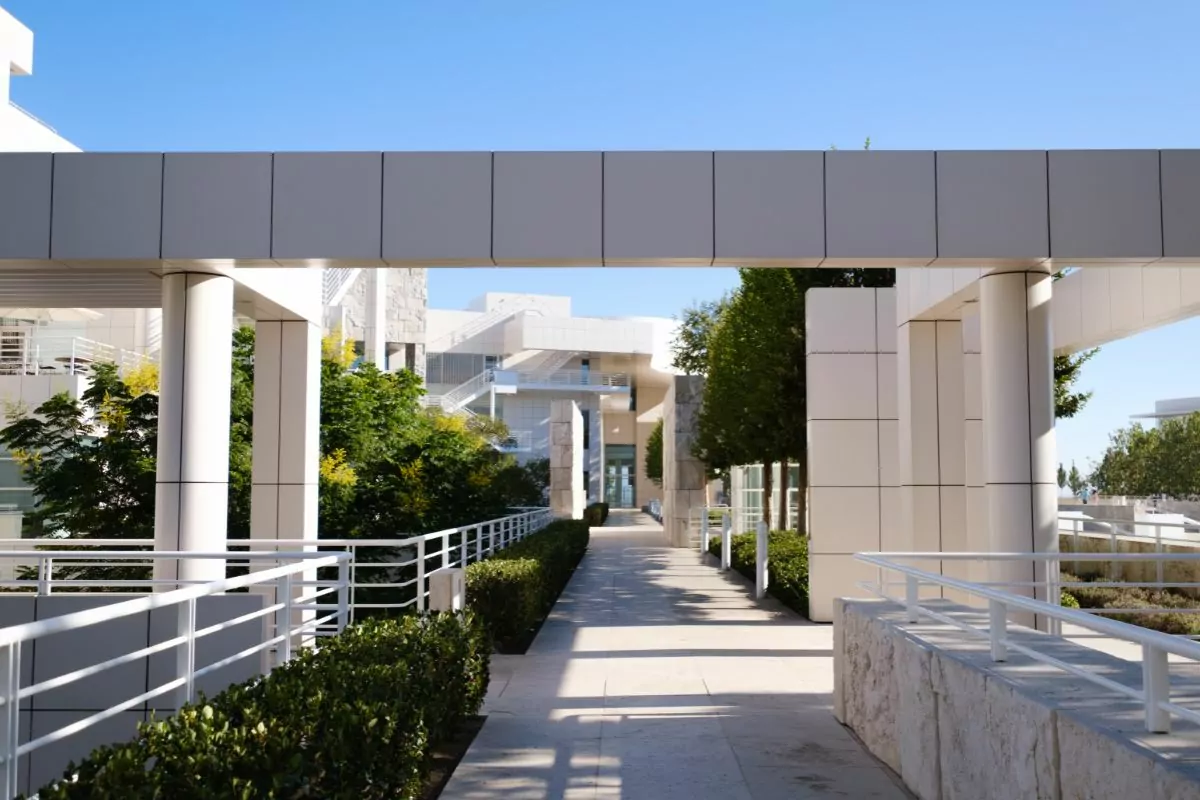
The J. Paul Getty Museum, one of the most well-liked museums in the US, receives almost 2 million visitors annually on average.
Its extensive collection of artwork spans 6000 years and requires two venues to store everything from paintings and drawings to illuminated manuscripts, photography, and sculpture.
One of the two venues of the J. Paul Getty Museum is the Center, which is situated in the Brentwood district of Los Angeles.
On December 16, 1997, the $1.3 billion Center officially opened to the public. It is renowned for its design, gardens, and vistas that overlook Los Angeles.
The museum’s Center branch houses pre-20th-century European paintings, drawings, illuminated manuscripts, sculptures, and decorative arts, as well as global photography from the 1830s to the present.
The Center’s collection also contains a sizable Central Garden created by Robert Irwin, as well as outdoor sculptures on terraces and in gardens.
15. Monterey Bay Aquarium

Because of its immersive exhibits and capacity to display marine life on a really colossal scale, the Monterey Bay Aquarium, which is committed to cutting-edge exhibits, marine research, and ocean conservation leadership, sets the bar for excellence around the world.
On Monterey’s historic Cannery Row, the former sardine cannery is now a top attraction, showcasing more than 35,000 sea creatures from more than 550 marine species.
Here, you can find a wide variety of local wildlife, including small and large fish, insects, animals, and plants.
The centerpiece of the aquarium is a three-story-high tank containing a towering kelp forest.
Here, you can gaze up at the spectacle of wolf eels, leopard sharks, and schools of sardines gliding and darting through the swaying kelp giants.
Visit one million gallon Open Sea to get incredibly close to enormous sunfish, hammerhead sharks, and blue- and yellowfin tuna before you spend some time relaxing and having all kinds of fun in the Splash Zone.
16. Santa Monica Pier
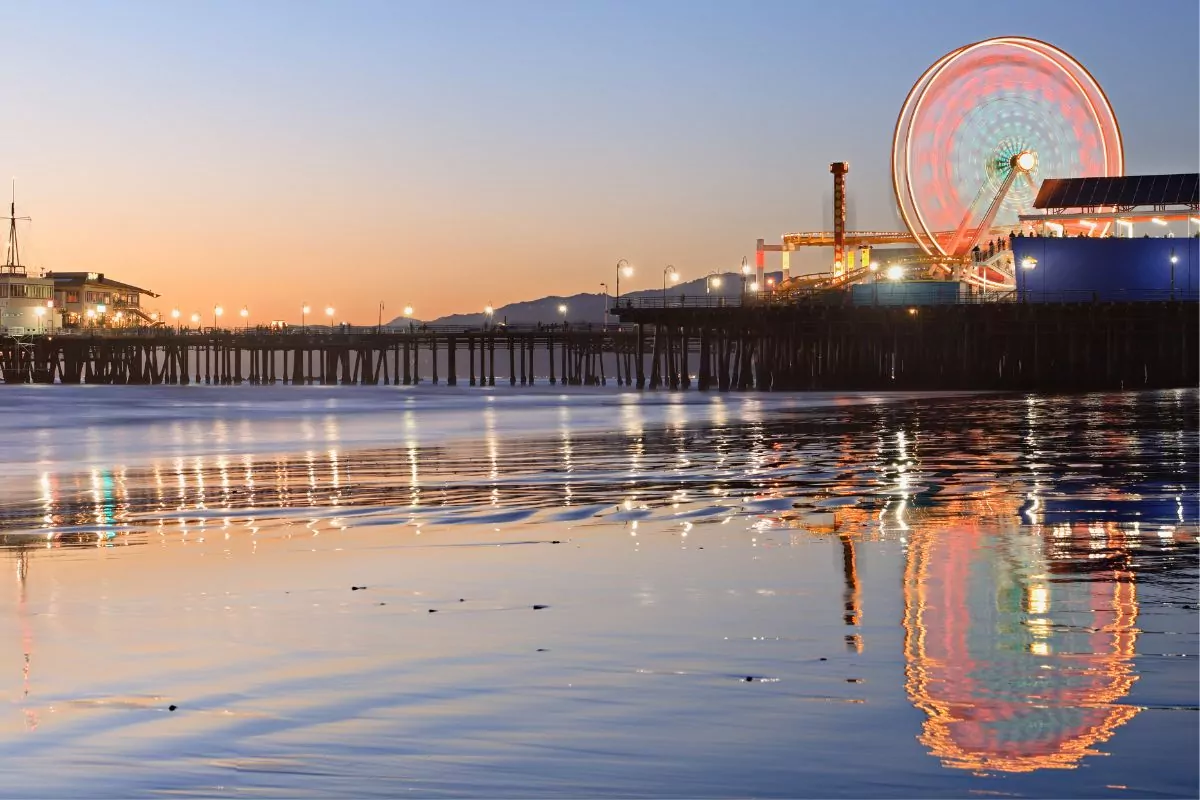
The legendary Santa Monica Pier was the first concrete pier on the West Coast when it was built in 1909. It immediately earned a reputation as Santa Monica’s top fishing location and is still a favorite activity to do there today.
The Looff Hippodrome at the Pier first opened in 1916, and the famous carousel was added to it in 1939. It is now a National Historic Landmark.
When you see the famous Ferris Wheel at the Santa Monica Beach Pier thrusting into the welcoming waves of the Pacific Ocean, you know you’ve reached Santa Monica, California.
The Santa Monica Pier, located at Santa Monica’s westernmost tip, is a mainstay of this beautiful seaside town.
The Santa Monica Pier is located in the area known as the Santa Monica Pier Area and Ocean Avenue on Santa Monica State Beach.
Along with attractions on Ocean Avenue and in Downtown Santa Monica, there are many incredible hotels close by.
The Pier has a ton of family-friendly attractions, lively street performers, eateries, and stores in addition to offering breathtaking views and more than a century of history.
17. Big Sur
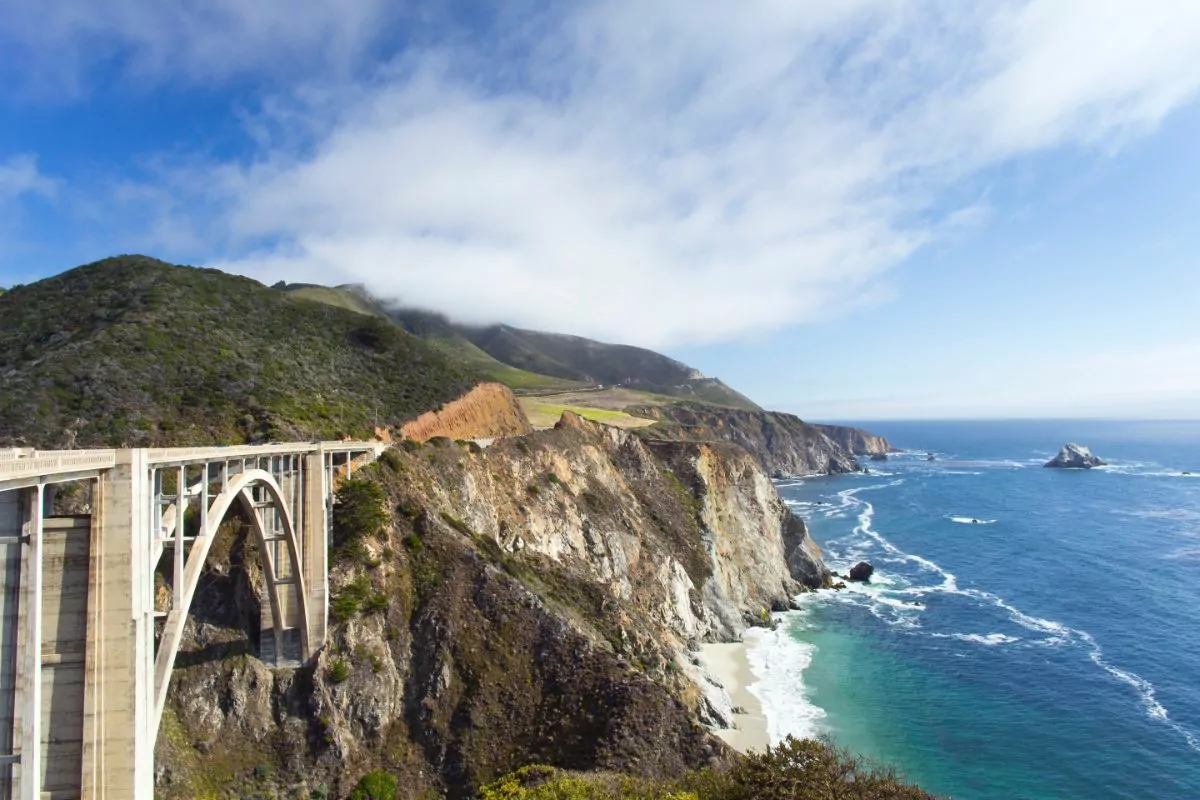
Big Sur begins in the north, close to the wealthy community of Carmel-by-the-Sea, where the flat grasslands around San Jose Creek give way to the jagged cliffs of Point Lobos, which some people consider to be the most stunning location along the entire coast.
Golden sand beaches, craggy cliffs, and the Pacific Ocean are all on one side of the area. The gorgeous Santa Lucia Mountains, on the other side, are home to coastal redwood forests, hiking paths, and waterfalls.
There are many pullover spots along Highway 1’s winding route through Big Sur, including ones near Bixby Bridge.
Stop at parks along the coast to observe the largest birds in North America, the endangered California condors, or gaze down to search the waves for migratory whales or sea otters floating among thick kelp beds, California’s state seaweed.
Along the coast, there are numerous campgrounds to choose from, including Pfeiffer Big Sur State Park, Fernwood Resort, and Big Sur Campground.
Due to the area’s natural beauty, expensive hotels like the opulent Ventana Big Sur and the cliff-hugging Post Ranch Inn are hotspots for affluent tourists.
18. Mono Lake
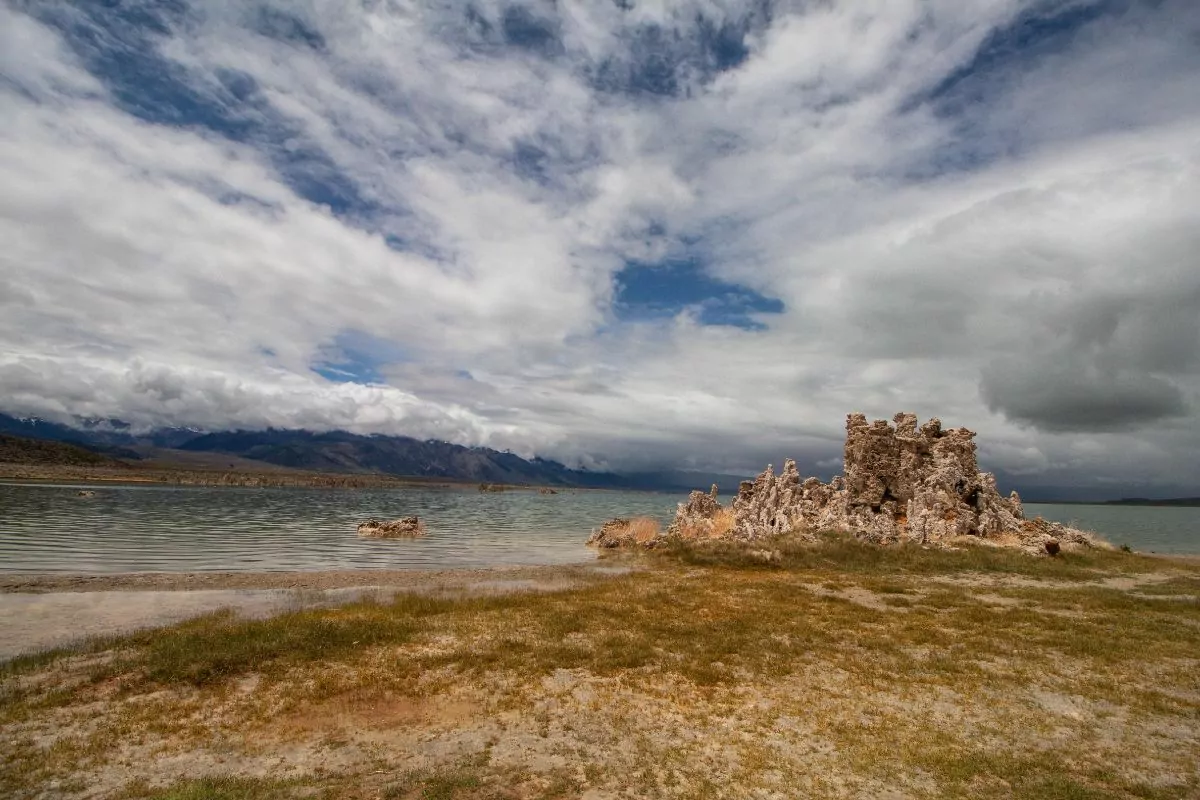
An ancient salty lake with a surface area of more than 70 square miles and a distinctive and fruitful ecology, Mono Lake is found on the eastern border of California, sandwiched between the parched Great Basin and the snow-capped Sierra Nevada.
The strange tufa towers at Mono Lake, which are made of mineral formations when freshwater springs burst up through the lake’s alkaline waters, are its most distinguishing feature.
Millions of migratory birds are drawn to the lake’s salty water, which supports trillions of brine shrimp.
Two rather sizable islands and numerous smaller rock formations can be found in Mono Lake.
Negit and Poaha Islands are what these are known as. In addition to the opportunity to swim in Mono Lake, Mono Lake offers hiking, interpretive paths, kayaking, and a tranquil retreat for soaking in nature in all its magnificence.
Due to the enhanced buoyancy brought on by the salt, swimming in it is very interesting and reminiscent of swimming in the Red Sea.
19. Glass Beach
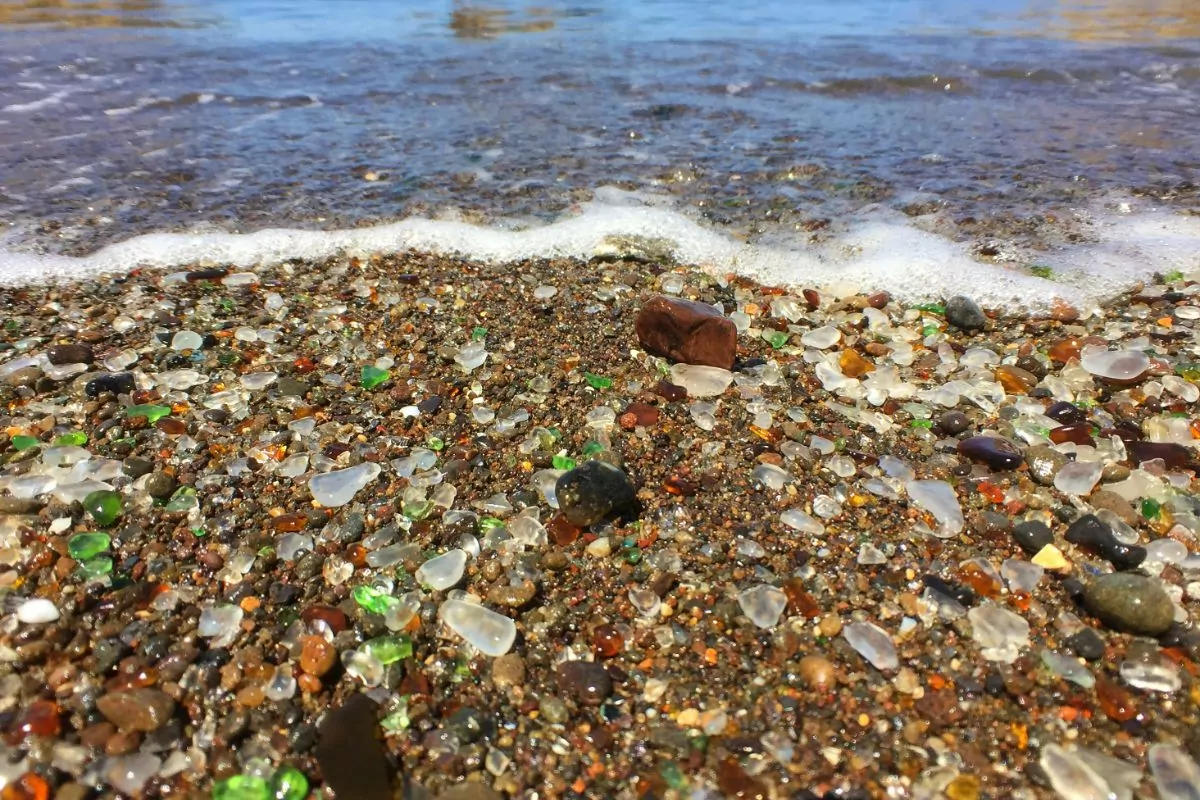
Mackerricher State Park in Fort Bragg is home to the natural phenomenon that is Glass Beach. This incredible beach gets its name from the smooth, colorful glass pieces that you can find muddled into the pebbles that lie along its front.
Broken bottles from locals’ trash cans have been turned into miniature jewels that can be found and photographed since this area was previously a trash dump.
Glass that was initially discovered on sand strips near bodies of water throughout time underwent chemical and physical changes before becoming the current natural frosted glass that can be found today.
Beachgoers and the general public are not permitted to take small or large glass fragments from the beach, according to California State Parks regulations.
They’re encouraged to leave the sea glass fragments in their current place so that others can explore and find this fascinating semi-natural treasure.
Every day in the summer, around 1,000 people visit Fort Bragg’s Glass Beach. The magnificent tide pools that haphazardly grow near the shore are another draw for tourists.
Low tide is the perfect time of day to explore there since you can witness the positive outcome of nature and humans interacting in all of its splendor.
20. Redwood National Park
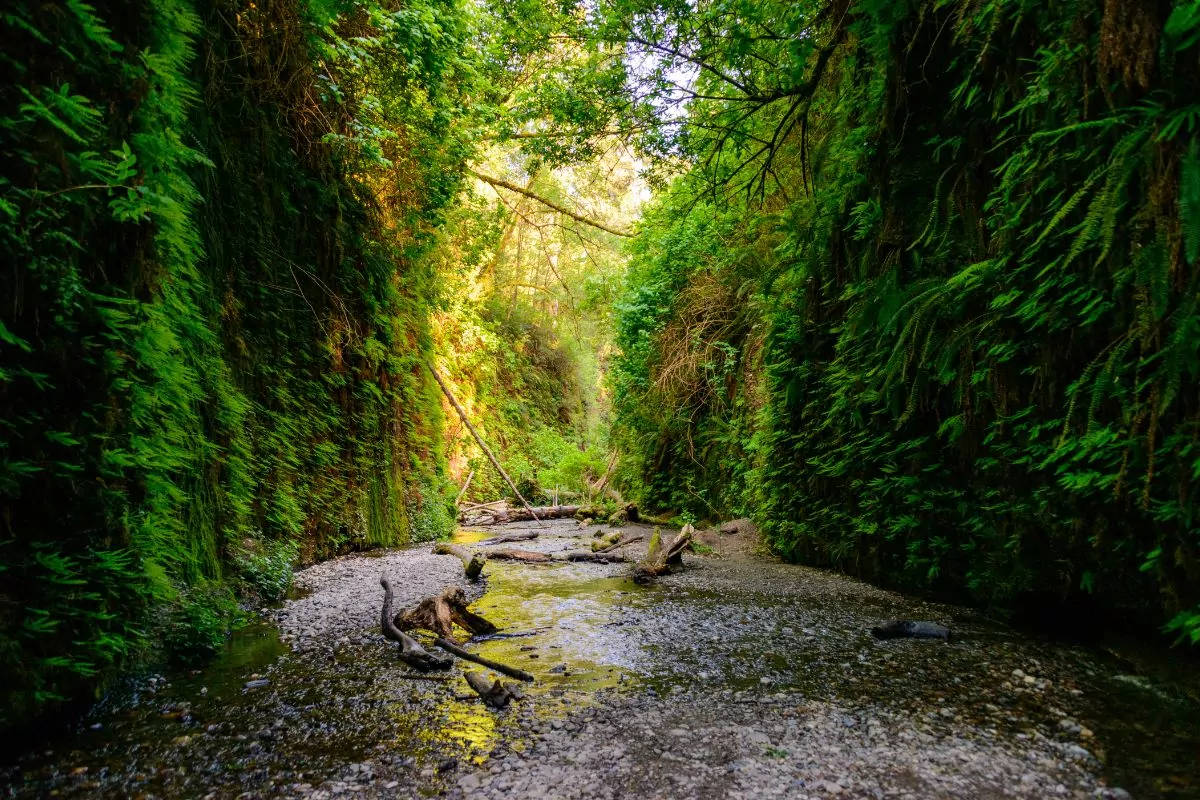
Old-growth coast redwoods can be found in Redwood National Park, which was founded in 1968 and is situated in northernmost coastal California.
Nearly half of the redwoods in old-growth around the world are protected by this World Heritage Site and International Biosphere Reserve.
These magnificent trees have a 2,000-year lifespan and can reach heights of more than 300 feet – around five stories taller than the Statue of Liberty!
Sword ferns, berry bushes, Douglas fir, spruce, and hemlock all contribute to the park’s multi-canopied understory.
Prairie and oak woodlands, powerful rivers and streams, and 37 miles of unspoiled Pacific shoreline make up the variety of habitats that make up Redwood Park.
Along the 200 miles of trails in the park system, you can hike, bike, camp, or ride a horse while taking in the beauty of nature at its best. Despite being open all year round, the park experiences heavy traffic in the summer.
To avoid this, consider visiting the park in the spring or fall, when migratory birds can be seen flying through the tall trees, rhododendrons bloom in the spring, and autumnal trees bring color in the fall.
21. Griffith Observatory
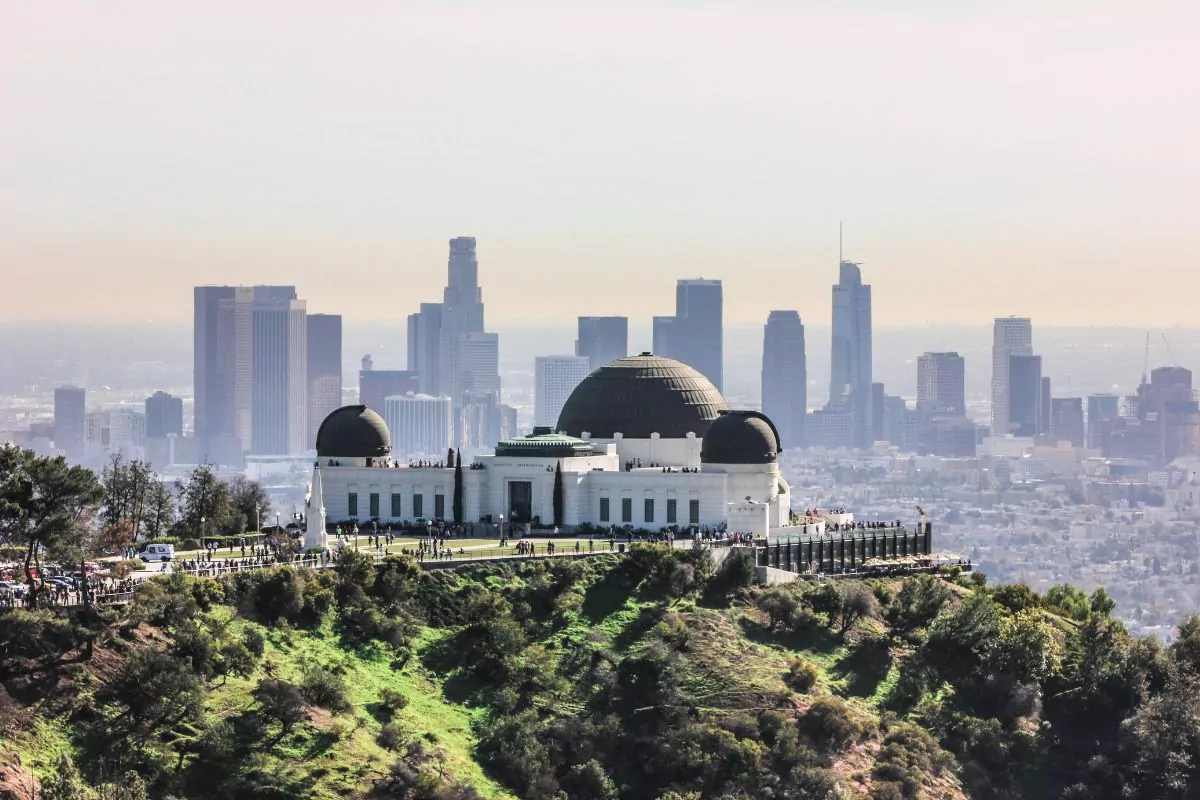
In addition to being a renowned civic gathering site and one of southern California’s best known attractions, Griffith Observatory is a symbol of Los Angeles and a pioneer in public astronomy.
The Observatory is situated in Griffith Park, right above the Los Feliz district, on the southern slope of Mount Hollywood.
It is 1,134 feet above sea level and is visible from many parts of the Los Angeles basin, as well as one of the best places to see the iconic Hollywood Sign.
With 1.6 million visitors a year, the 67,000 square foot structure is both the most visited public observatory in the world and one of the most well-liked informal education venues in the United States.
It is a distinctive fusion of a planetarium, public observatory, and exhibition space. Each evening, free public telescope viewing is offered so that you can explore the wonders of the cosmos up close.
22. San Francisco Cable Car System
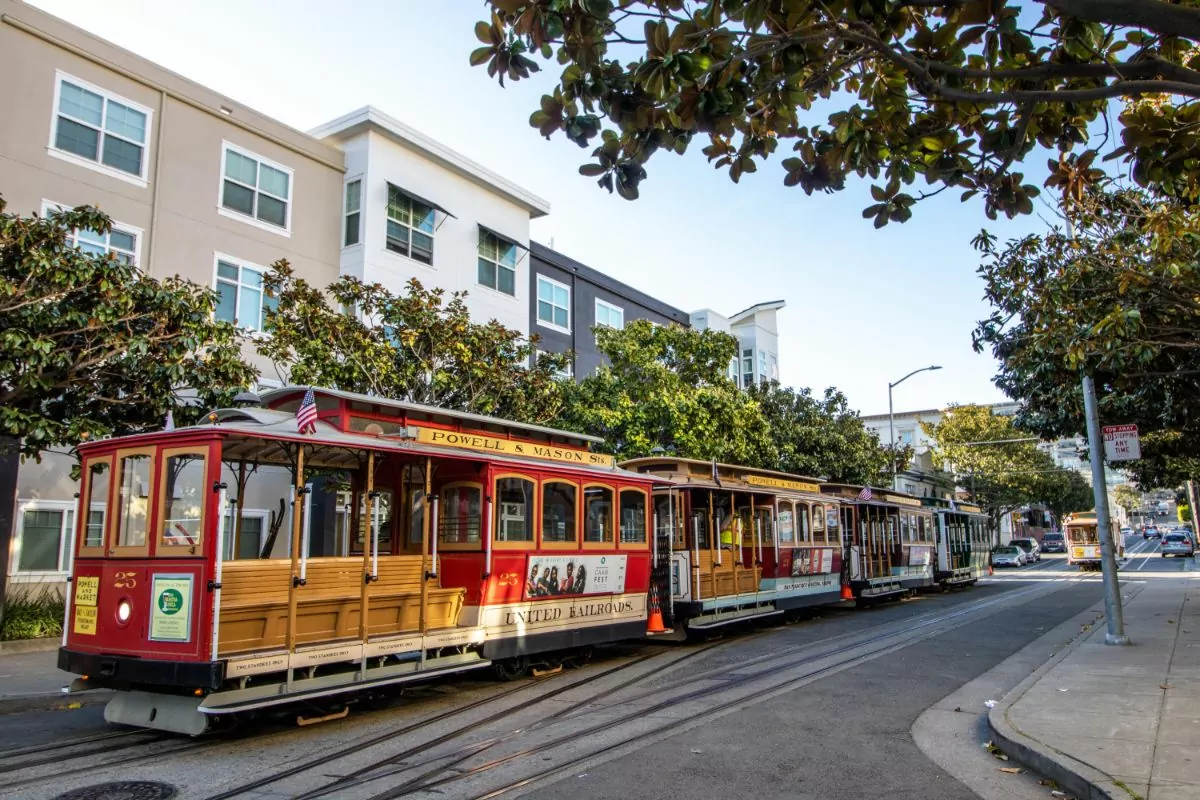
The most recognizable and unforgettable experience of your entire California journey may be a ride on San Francisco’s cable cars. They are a well-known historical icon that provides practical transportation up San Francisco’s steep hills.
In the city, there are three different cable car lines to choose from. The two main lines, Powell/Hyde and Powell/Mason, leave from the lively Powell and Market crossroads and travel in the direction of Fisherman’s Wharf.
Due to their position and the fact that they climb some quite steep hills and provide cyclists with those iconic city views, these two lines are the ones that most tourists choose.
The California/Van Ness line, which departs from California and Market and goes until Van Ness, is the other San Francisco cable car route.
You won’t want to miss the annual cable car bell ringing competitions, which take place on either the second or third Thursday of the month if you’re fortunate enough to be visiting during the month of July.
Many people and tourists flock to Union Square to see this event, creating a lively and exciting atmosphere on the streets of San Francisco.
23. Solvang
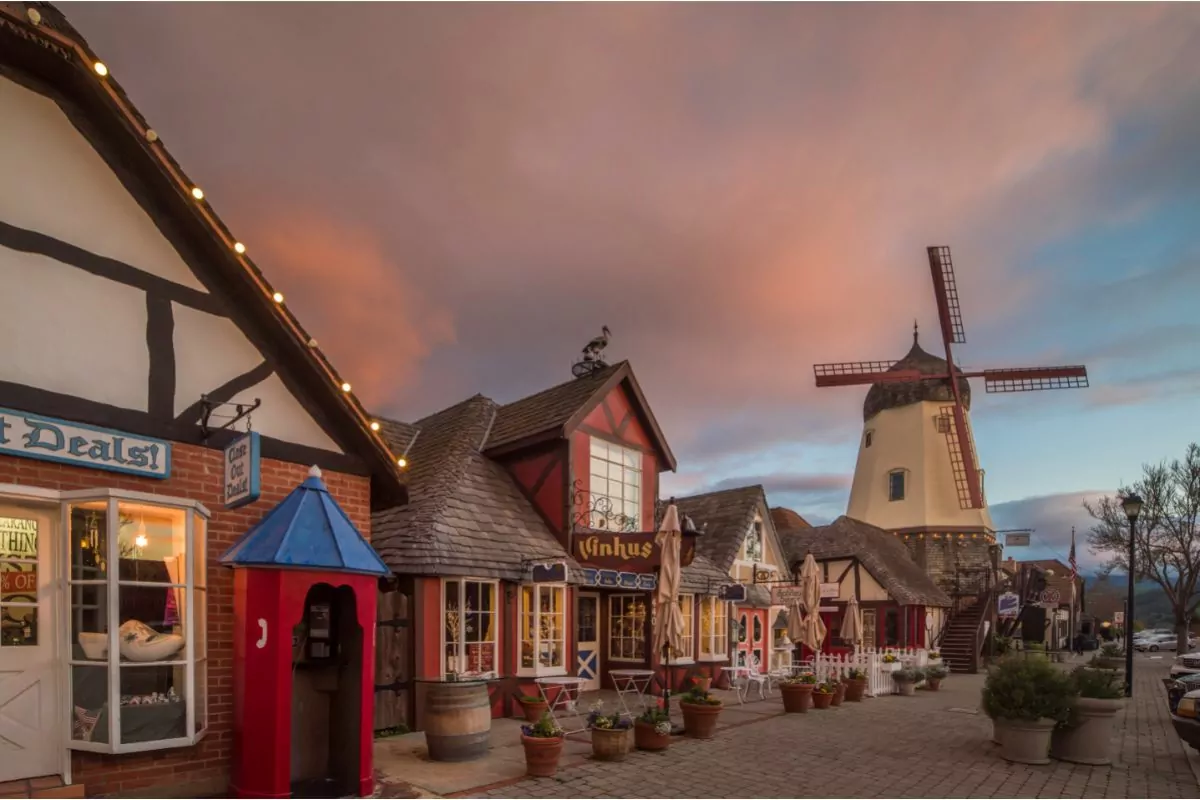
One of the most beautiful small towns in the west, Solvang’s fascinating history began in 1911 when intrepid Danish-American settlers crossed the plains from Iowa to build a community in the golden state of California.
Each year, more than a million tourists come to experience the cuisine, culture, and specialty boutique shopping of northern Europe.
Three museums, 15 hotels and inns, a full-service guest ranch, conference spaces, more than 30 bakeries and restaurants, 150 stores, and the 700-seat outdoor Solvang Theaterfest are all located in the pedestrian-friendly village.
A short 45-minute trip from Santa Barbara, Solvang is a genuinely unique village full with events, festivals, and incredible dining.
If you’re in the area in September, make sure not to miss Solvang Danish Days, which begins with a parade of floats and horse-drawn wagons dressed in Danish attire.
Visit the marketplace of Old World craftspeople, take in Viking-age re-enactments, toast your neighbor in the beer and wine garden, and watch the aebleskiver-eating competition.
24. Burney Falls
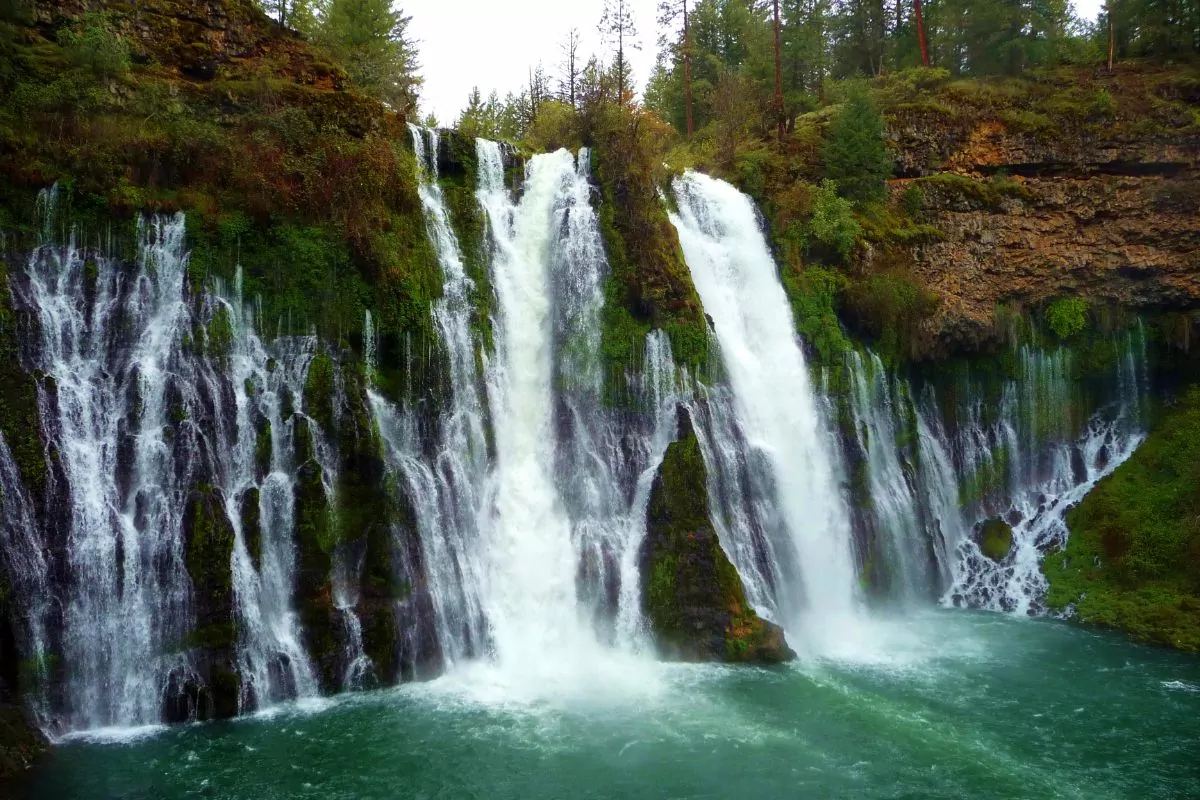
Burney Falls is a 129-foot-tall, fern-draped waterfall that is considered to be one of California’s most beautiful waterfalls.
This waterfall, which is one of California’s major highlights and was even dubbed “The 8th Wonder of the World” by President Teddy Roosevelt, is situated in the Shasta Cascade region 60 miles northeast of Redding.
The magnificent falls are located in McArthur-Burney Falls Memorial State Park; just take a short route to the main overlook.
You will be confronted with a wide wall of water that will crash over a mossy ledge, splash down a face covered in ferns, throw glittering shards left and right, and then plunge into a clear pool below.
The enormous pool at the foot of the cascade, as well as Burney Creek above it, are popular spots for catch-and-release fly-fishing. If you continue down the trail to the pool, you could see fishermen braving the cold.
Visit the falls during the spring, from early April to October, when snowmelt is at its height, to witness the falls at their most powerful.
After you’ve had your fill of the spectacle, you can hike the park’s 5 kilometers of hiking paths. A campsite with 121 spots and 24 cabins is available for people who want to spend the night.
25. Palm Springs
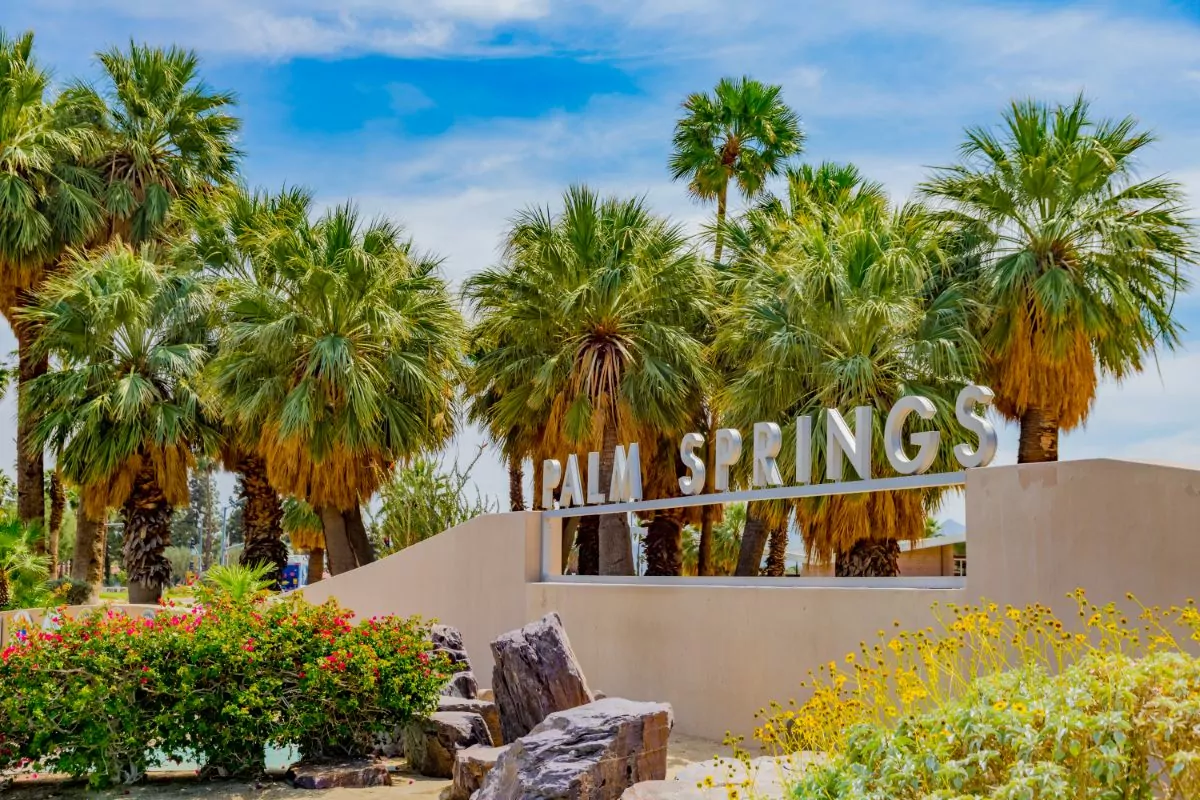
Palm Springs is located in central Riverside County, on the western outskirts of the Coachella Valley, 107 miles east of Los Angeles. Palm Springs is the place to enjoy life, whether it’s a game of golf in the winter or a massage at a world-class spa facility.
The shopping, entertainment, dining, and recreational opportunities are of the highest caliber in Palm Springs. It is frequently referred to as a small metropolis with the cultural amenities of an urban area.
Numerous parks and recreational areas are available in the city, including a baseball stadium, a dog park, a public Olympic-size pool, a golf course, and tennis courts.
There are also horseback riding opportunities, water parks, cycling paths, and hiking trails for those who like to be active.
The Palm Springs Aerial Tramway, which whisks visitors into the mountains and ascends around 5,800 feet in 10 minutes, is one of the city’s signature attractions.
The car, which is hung by wires and turns as it ascends, provides vistas of the mountains and a break from the sweltering heat of the city below.
The Living Desert, a nonprofit zoo and garden with a focus on desert conservation, is also located in Palm Springs.
In this picturesque setting, giraffes and ostriches can freely walk beside each other, and lizards scurry about the land. You can see spectacular species in their natural setting, including fennec foxes, snakes, hedgehogs, cheetahs, and camels.
26. Lombard Street
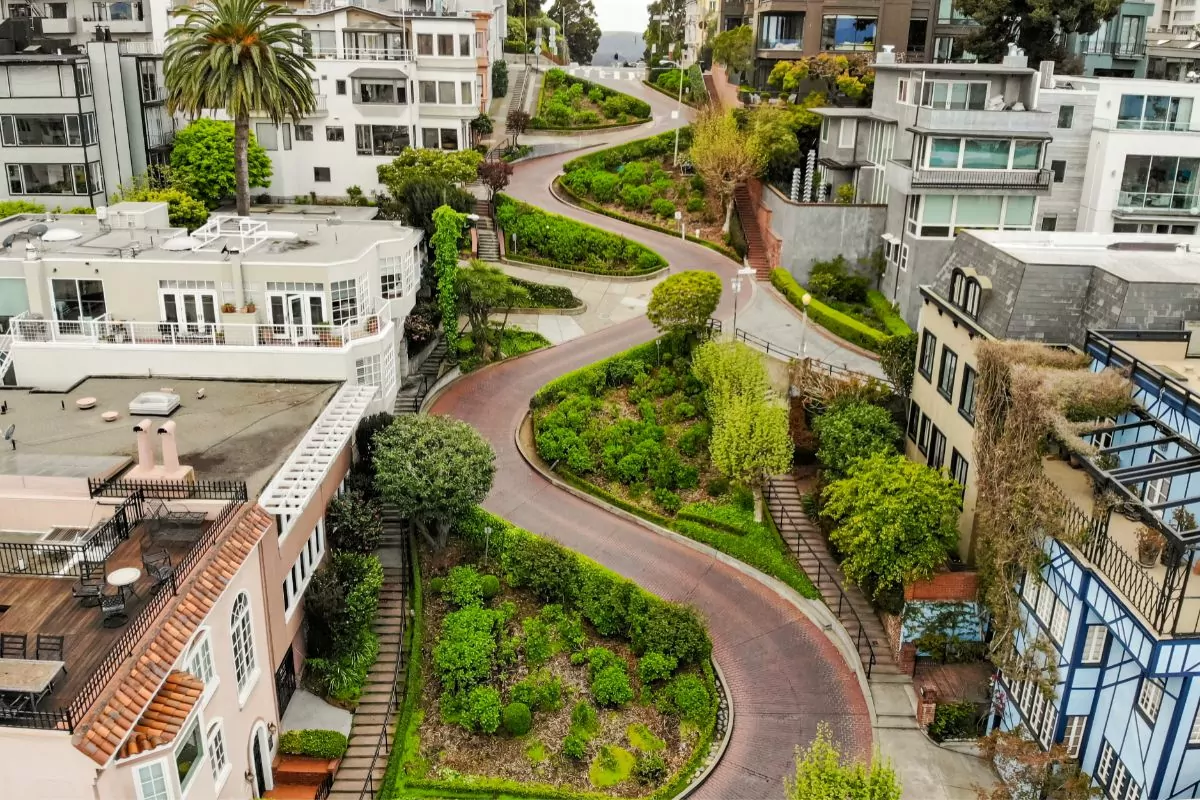
One of the most crooked streets in the country is Lombard Street in San Francisco, which can be seen on various excursions. Famously, San Francisco has some of the nation’s steepest streets.
The varied gradient of the road is sure to attract your attention and give your heart rate a boost whether you’re walking or driving. One of the most distinctive of the vertically endowed avenues, Lombard Street is a wonderful addition to any trip.
In order to switchback down the one-way hill past lovely Victorian residences, the steep, uphill street was built with abrupt turns.
Every day, a never-ending stream of tourists rush down the street in this Russian Hill neighborhood, especially in the spring and during the summer when the street is alive with the color of countless beautiful flowers that are in bloom.
Even though it’s a steep climb, Lombard Street only takes a short while to see and is ideally situated for a number of other San Francisco attractions.
You can easily stroll from this area to North Beach, Chinatown, and Fisherman’s Wharf. Additionally, the San Francisco Art Institute, which occasionally hosts public events, lectures, and art exhibitions, will be only a few blocks away from you.
27. Route 66
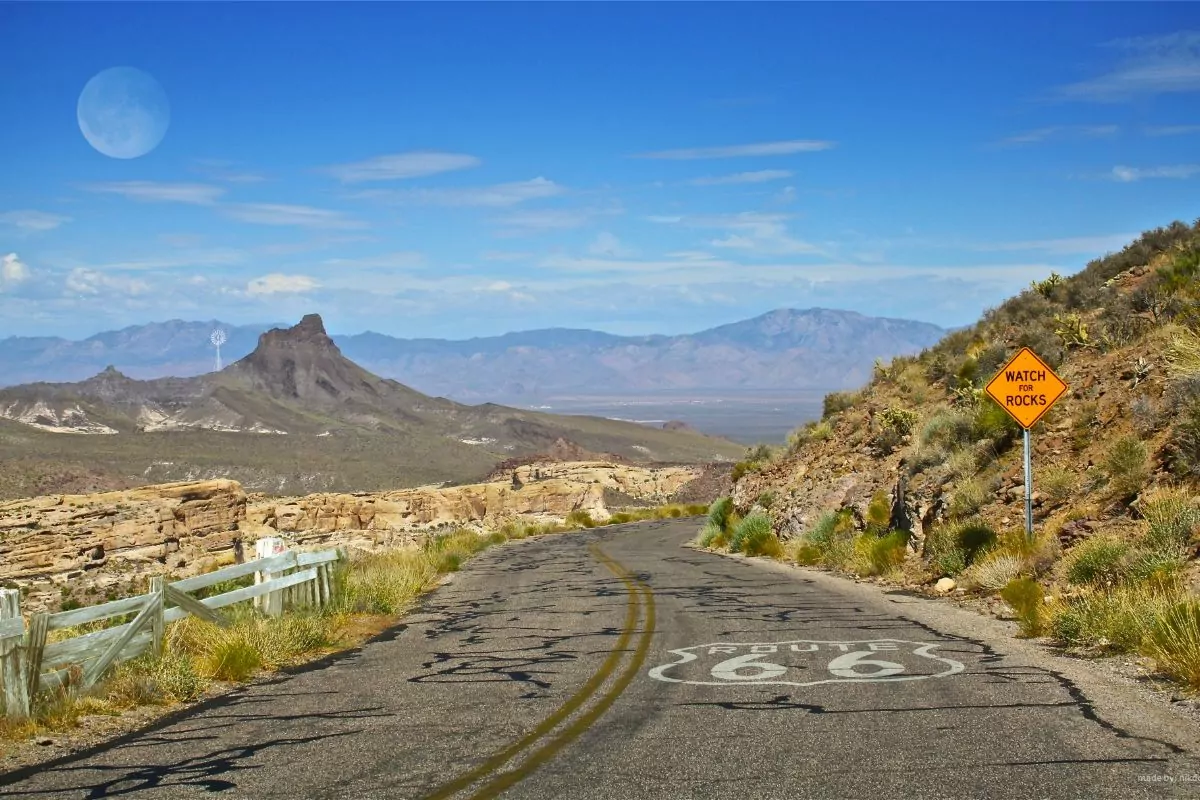
Travelers on Route 66 across California pass through every variety of Southern California terrain imaginable. This well-traveled route leads to Santa Monica’s stunning beaches via the challenging Mojave Desert, mountains, and lush inland valleys.
As you cross the state line and arrive in the small hamlet of Needles, the hottest place in the US, with summertime highs that regularly reach 105°F, the harsh Mojave Desert greets you.
You will continue on to San Bernardino from there, which is a gateway to the city of Los Angeles.
The road’s end is signified by Santa Monica Pier. Your 2,450-mile road trip will come to an end when you arrive at the Pacific Ocean, where you can reflect on the experiences, stories, and sites you’ve discovered along Route 66 through California.
28. Old Town San Diego
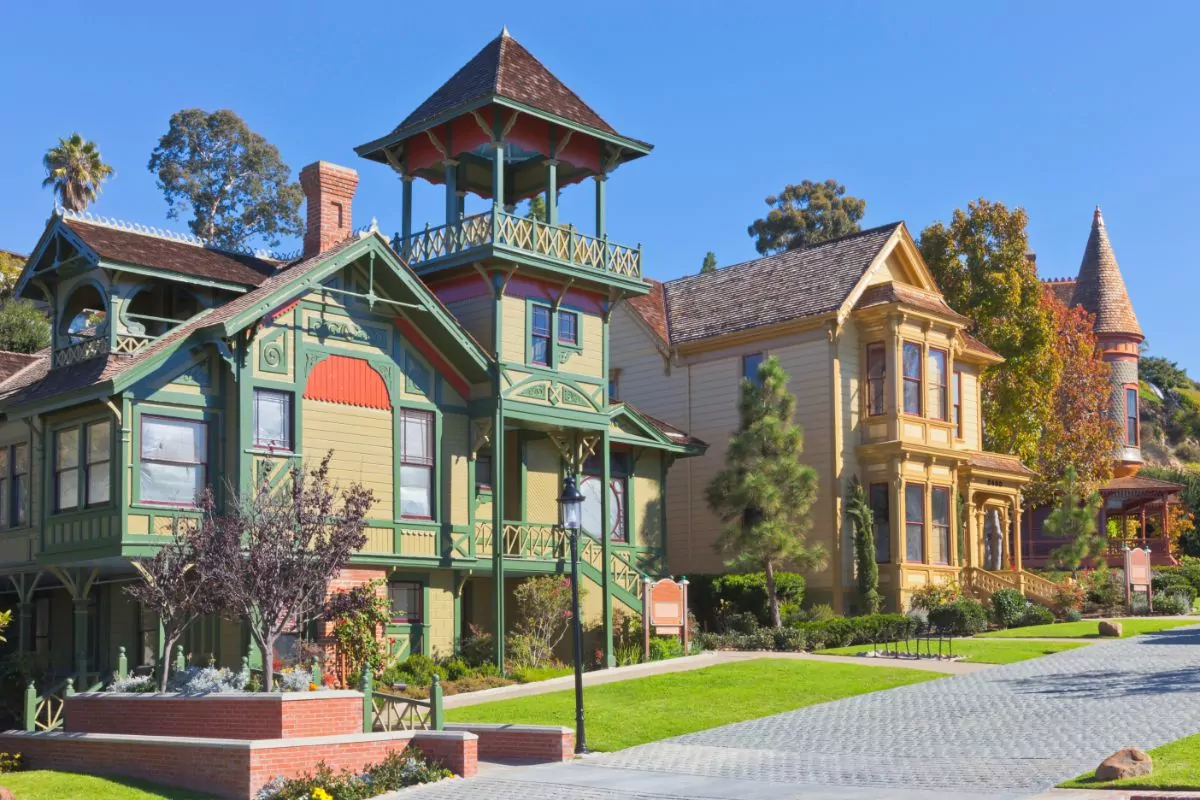
Visit Old Town San Diego State Historic Park to see the continuing legacy of California’s beginnings.
San Diego’s early years, from 1820 to 1870, are commemorated through the town’s numerous restored historic structures and museums, allowing you to experience California’s history firsthand.
Old Town’s dining scene is bustling and energetic and is well-known for its authentic Mexican food. El Agave offers conventional flavors and cooking methods in a classy setting.
This hidden hacienda-style restaurant on the second level has an incredible tequila collection and a cuisine that focuses on elegant meals that highlight local Mexican ingredients.
You can also make reservations at Oculto 477, a neo-speakeasy pub next to the famous Campo Santo Cemetery graveyard.
Every day in Old Town, live mariachi performers can be seen as well as seasonal and event performances all year long.
Check the Fiesta de Reyes stage in Old Town State Park’s activities calendar to see when the Ballet Folklórico dancers will be performing too; this spectacular display of Mexican history is not to be missed.
29. Hearst Castle
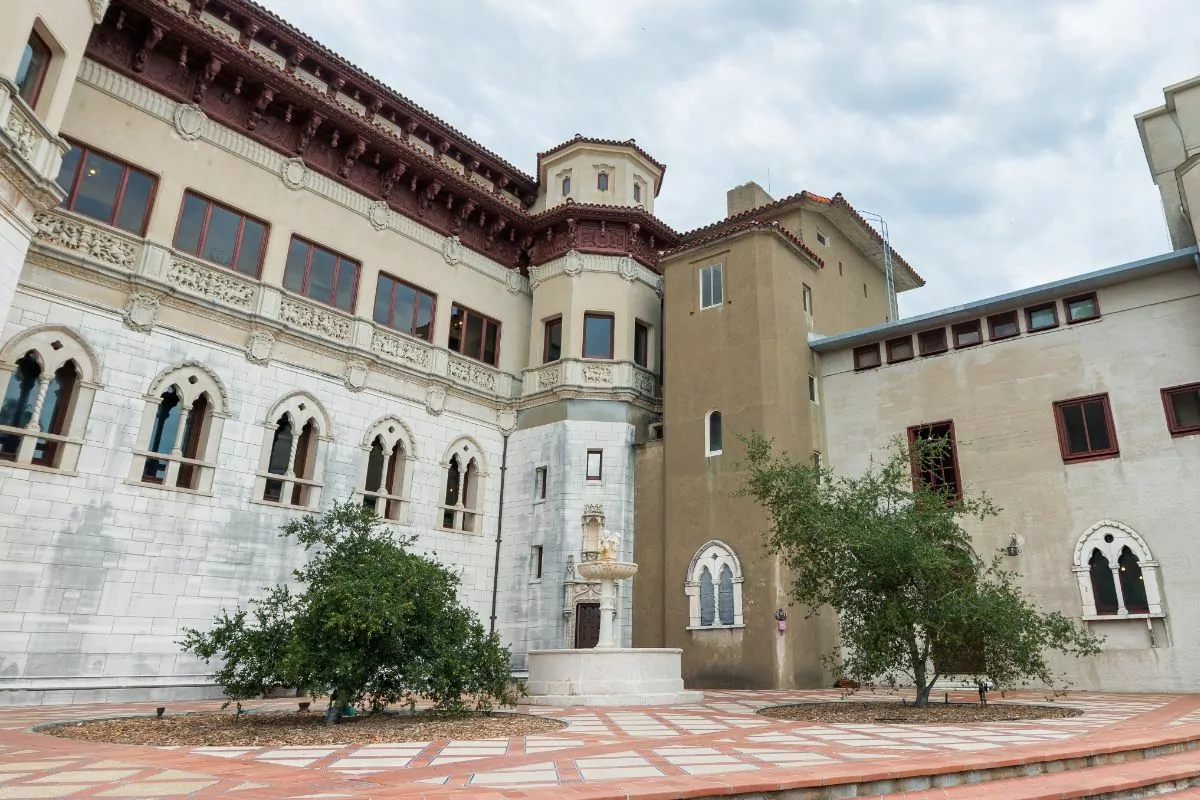
Hearst Castle is a stunning estate with a 165-room castle, 127 acres of terraced gardens, shimmering fountains, towering palms, and panoramic views of the warm Central Coast.
The complex was lavishly planned by Julia Morgan, the first female architect in California, and it was finished in 1947 for publishing tycoon William Randolph Hearst to use as his own residence. It is currently one of California’s most popular state historical sites.
You can spend a whole day or longer in San Simeon touring the castle and its surroundings.
The seaside town offers a wide selection of lodging options, from budget to luxurious. One of the daily tours of the main house at Hearst Castle or a special tour of the cottages are great ways to start your visit.
Visitors get the chance to spend some time admiring the residence’s two opulent pools throughout each tour.
The 104-foot-long outdoor Neptune Pool is surrounded by marble statues of Neptune and Nereid who watch over the watery paradise and is heated by an oil-burning system.
The indoor Roman Pool is decorated with lavish elements like cobalt blue and gold glass tiles to give it the appearance of an opulent Roman bath.
Finish off a trip to the Hearst Ranch Winery in San Simeon, which was co-founded by Steve, a great-grandson of William Randolph Hearst.
Along with breathtaking vistas, the tasting room on the Pacific Coast Highway provides a variety of wines, including Chardonnay, Cabernet Sauvignon, and Zinfandel.
30. La Brea Tar Pits
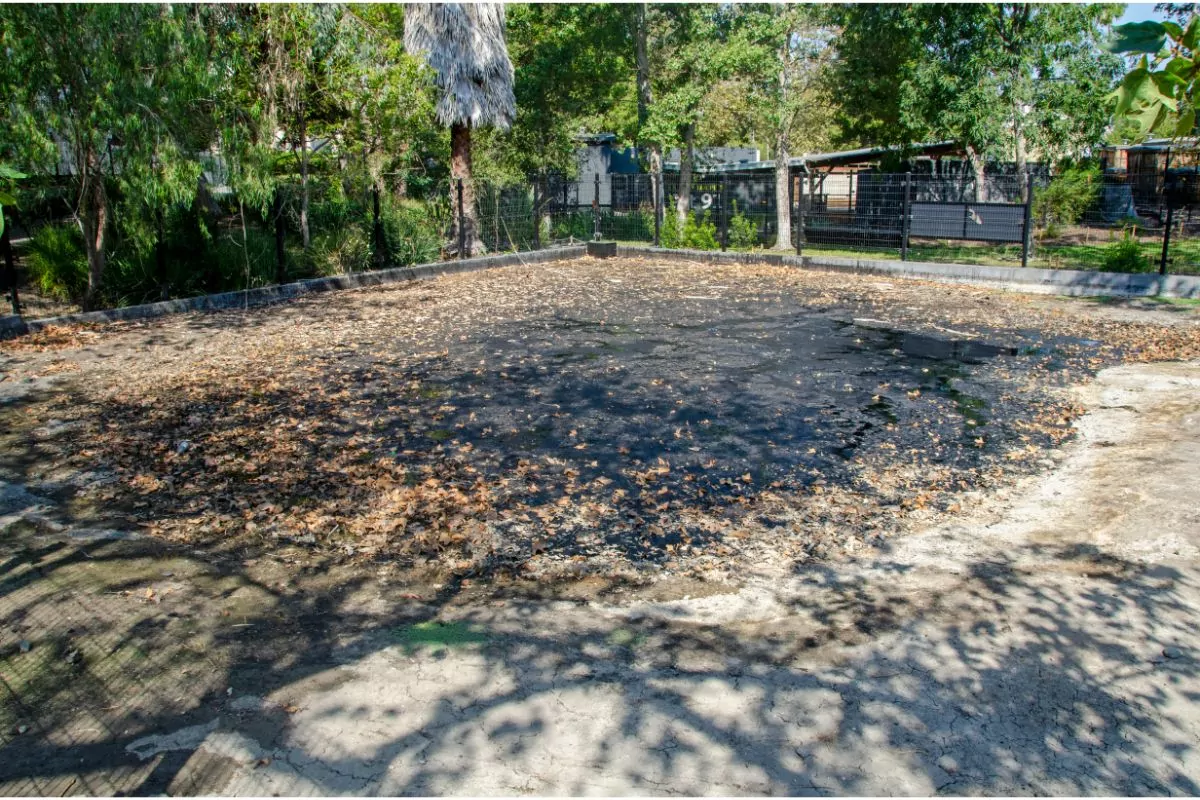
One of the most popular fossil locations in the world is the La Brea Tar Pits, which are situated in the center of metropolitan Los Angeles. Discover the only active urban Ice Age excavation site in the world right here.
The best samples of the local animal and plant fossils, including mammoths, saber-toothed cats, dire wolves, and other species, are on display inside the museum.
To see what the excavators have found today, head outside to the tar pits, where tar is still bubbling next to active fossil excavation sites.
Make the most of your trip by taking the Excavator Tour, where you’ll learn the inside story, observe scientists working on freshly discovered fossils, tour the renowned Lake Pit, and go to the live dig site where researchers are constantly uncovering new Ice Age artifacts.
Getting Around California
Although California is one of the best states in the nation for things to do, keep in mind that the state is huge. You cannot expect to travel the entire state in a week since it would take around 12 hours to drive nonstop from top to bottom.
If you decide to take a road trip, you should fly into a major city like San Diego, Los Angeles, or San Francisco to serve as your adventure’s beginning point and then rent a car there.
If you don’t want to deal with renting a car and are only in California to see a major city, you could get around by using public transportation and rideshare services like Uber.
San Francisco is undoubtedly the largest city in California with the best public transportation system, but if you’re visiting LA or San Diego, renting a car would be your best option for more convenient and affordable transportation.
Packing For California
Layers and comfort should be your top priorities when deciding what to bring for an adventure in California. Although it can get a little chilly at night, the weather is mainly warm and dry.
It is a good idea to pack both shorts and longer pants, as well as light coats and sweaters mixed in with tanks and tees. Sunglasses, hats, and sunscreen are also essential.
Take a moment to consider the activities you’ll be interested in during your trip before you leave.
In California, you can go surfing, snowboarding, paddle boarding, hiking, swimming, horse riding, camping, and scuba diving, among many other outdoor activities.
Consider what gear you might need for any specific activities so you’re not underprepared and uncomfortable.
The Best Time To Visit California
There is never a terrible time to visit California, which is one of the advantages of making vacation plans there.
While there are some seasons that are preferable to others for travel, California is renowned for having some of the best year-round weather in the country.
Of course, given the size of the state, the optimal times for your vacation may vary depending on where in California you intend to go and what you intend to accomplish.
Most tourists automatically assume that summer is the ideal season to visit California for sunny weather. Although the weather is beautiful during that time of year, desert locations like Death Valley and Palm Springs will be extremely hot.
If you’re considering taking a lengthy road trip across California, many seasoned travelers agree that fall is the best time to go.
The desert towns are beginning to cool off at this time of year, and Southern California is still experiencing ideal beach weather. What’s even better is that there are less tourists at main attractions and more affordable hotel rates.
Top Tips For Planning Your Trip To California
When planning your vacation to California, there’s a few things you should know to make your trip even better! Here are some of our top tips for making the most of your trip.
1. Get A National Parks Pass
The best option if you want to visit several national parks is to purchase a national park pass.
Most of the parks are $30, while Yosemite has an entrance fee of $35. If you want to visit more than two, purchasing the year pass for $80 is more cost-effective than paying for each visit separately.
There are nine national parks in California, as well as numerous additional locations that provide discounted access with the pass. Many tourists to the state choose to purchase passes, which can be done online or at the park you visit first.
2. Adjust Your Budget
California can be expensive, to say the least. Food and other commodities you buy are subject to a state tax, and tipping is expected. Additionally, parking in San Francisco hotels and tourist districts might cost $30–$40 per day.
You might be able to find a discount online if you want to visit several locations in a city. If you need to stretch your budget, look into city passes or any of the other websites offering reduced tour attractions.
3. Book Accommodation In Advance
Advance reservations are often recommended, especially for major national parks or large cities.
Campground bookings are made available on specific dates, frequently six months in advance, in places like Yosemite. Make a note of these dates if you are planning a vacation so that you can be online and prepared to try to get a space.
It is important to book online in advance so that you can travel with more confidence. It will also save you some money to book in advance, when rates are cheaper and with plenty of notice.
4. Take Traffic Into Account
In Los Angeles, traffic is pretty bad, and depending on when you travel, it can take a solid hour to go to a location that is only 5 miles away.
If you’re trying to leave or enter the city during rush hour in San Francisco, the same applies. Considering the state’s heavy traffic, schedule your drives accordingly.
Final Thoughts
There is an incredible amount to see in California. It boasts some of the best attractions in the world and there is so much to do, eat, and experience! With this guide, you can plan an exciting itinerary and truly embrace everything that California has to offer.
The fact that California has family-friendly theme parks that can keep you entertained for days on end is just one of the reasons why it is one of the most sought-after travel destinations in the country.
But California also features stunning coasts, national parks, waterfronts, and even deserts that can’t be missed.
There are many wonderful cities in California, including Los Angeles, San Francisco, Sacramento, San Diego, and many more.
Going to destinations like Lake Tahoe, Disneyland, Big Sur, and Yosemite National Park is among the best things to do in California. Aside from the potential to spot a star in Hollywood, there are other iconic pieces of architecture that are worth seeing.
California has something for everyone, whether you’re looking for nature, mainstream entertainment, or cultural and educational activities.
To help you find out where to go when you visit California, here are the top 30 attractions to see when visiting the Golden State.
- The 10 Most Dog Friendly Hotels in Glasgow: A Comprehensive Guide for Pet Parents - September 29, 2023
- The 8 Best Dog Friendly Hotels In Liverpool For You And Your Dog - September 25, 2023
- The 8 Best Dog Friendly Hotels In Weymouth For Your Coastal Trip - September 23, 2023

